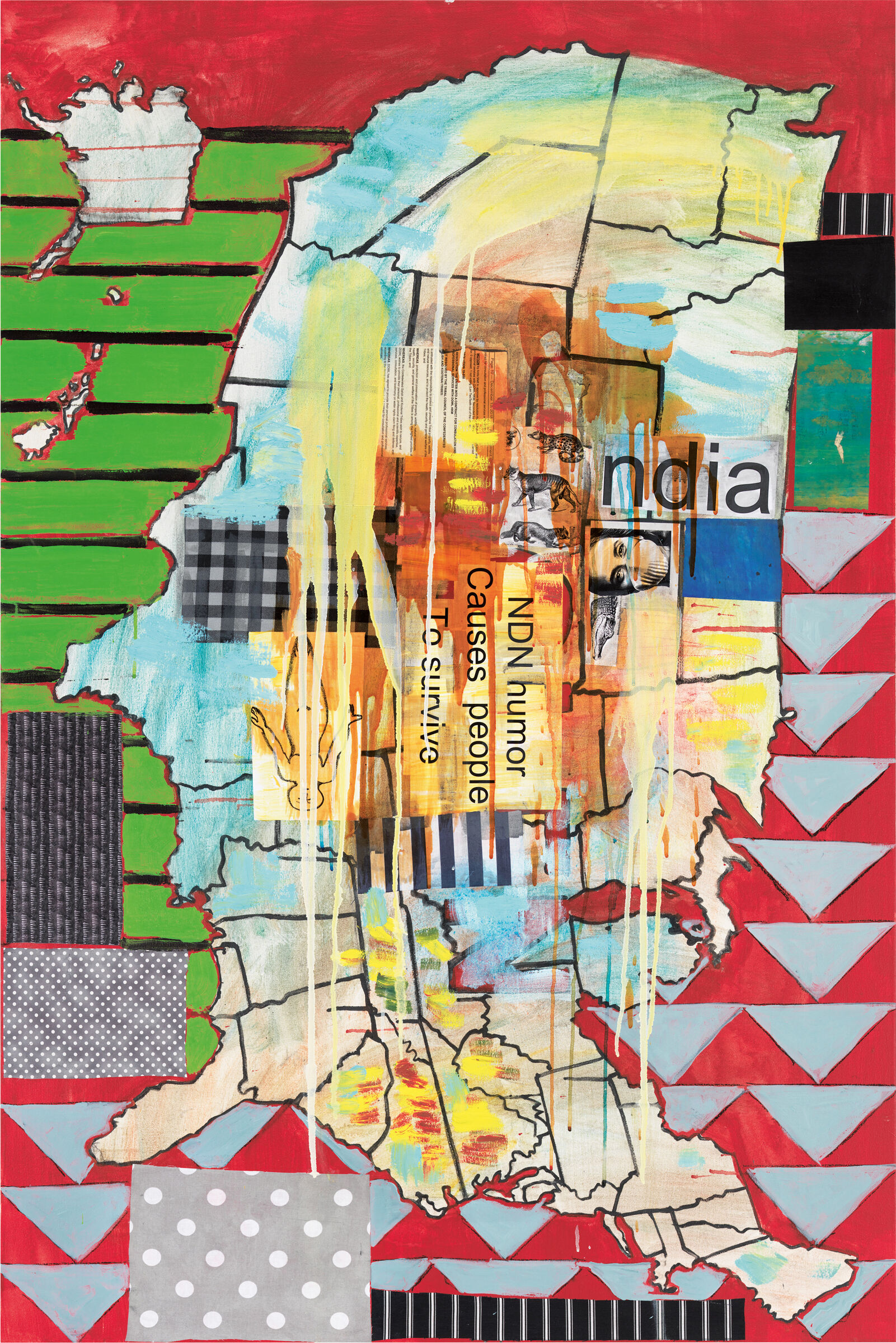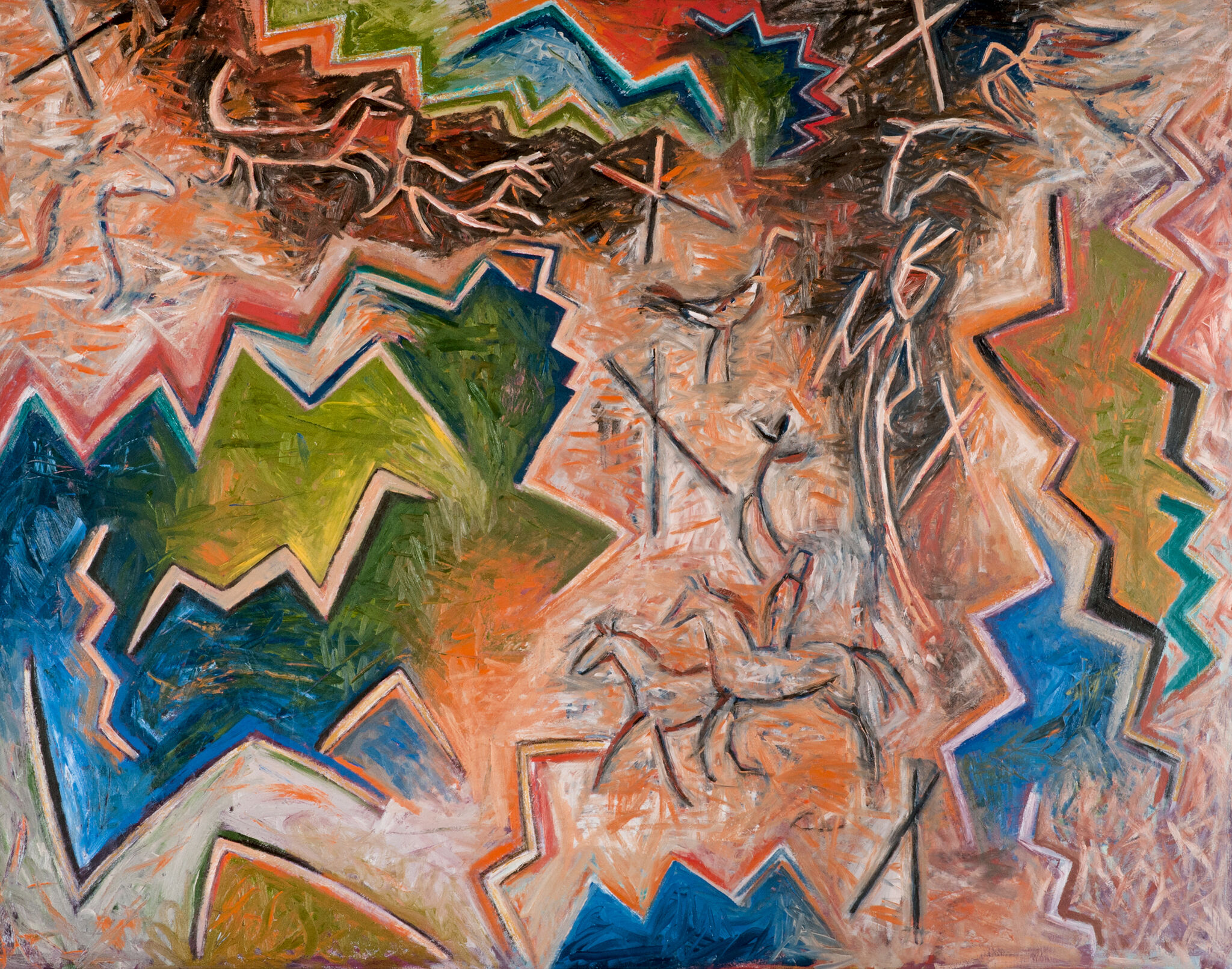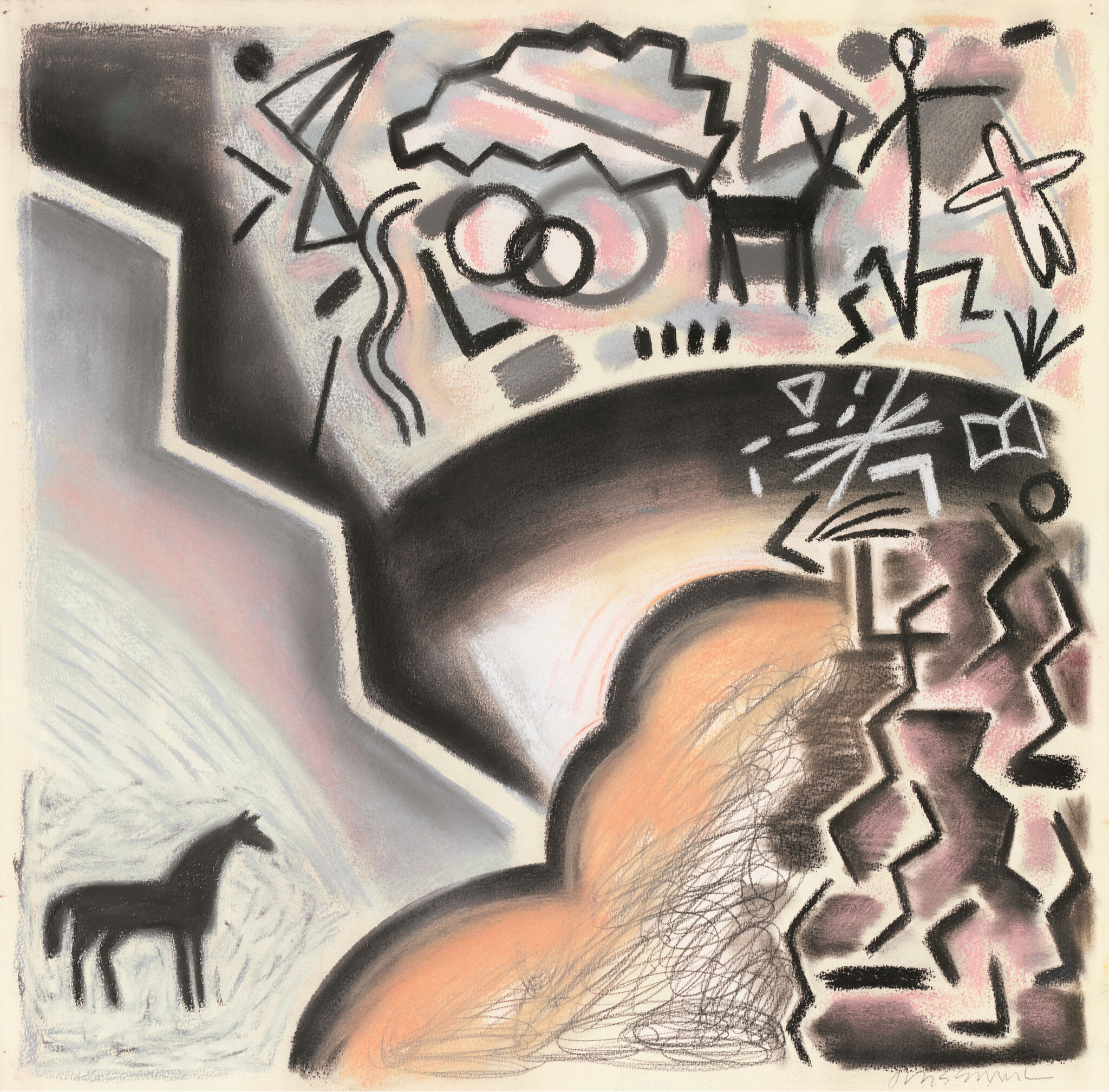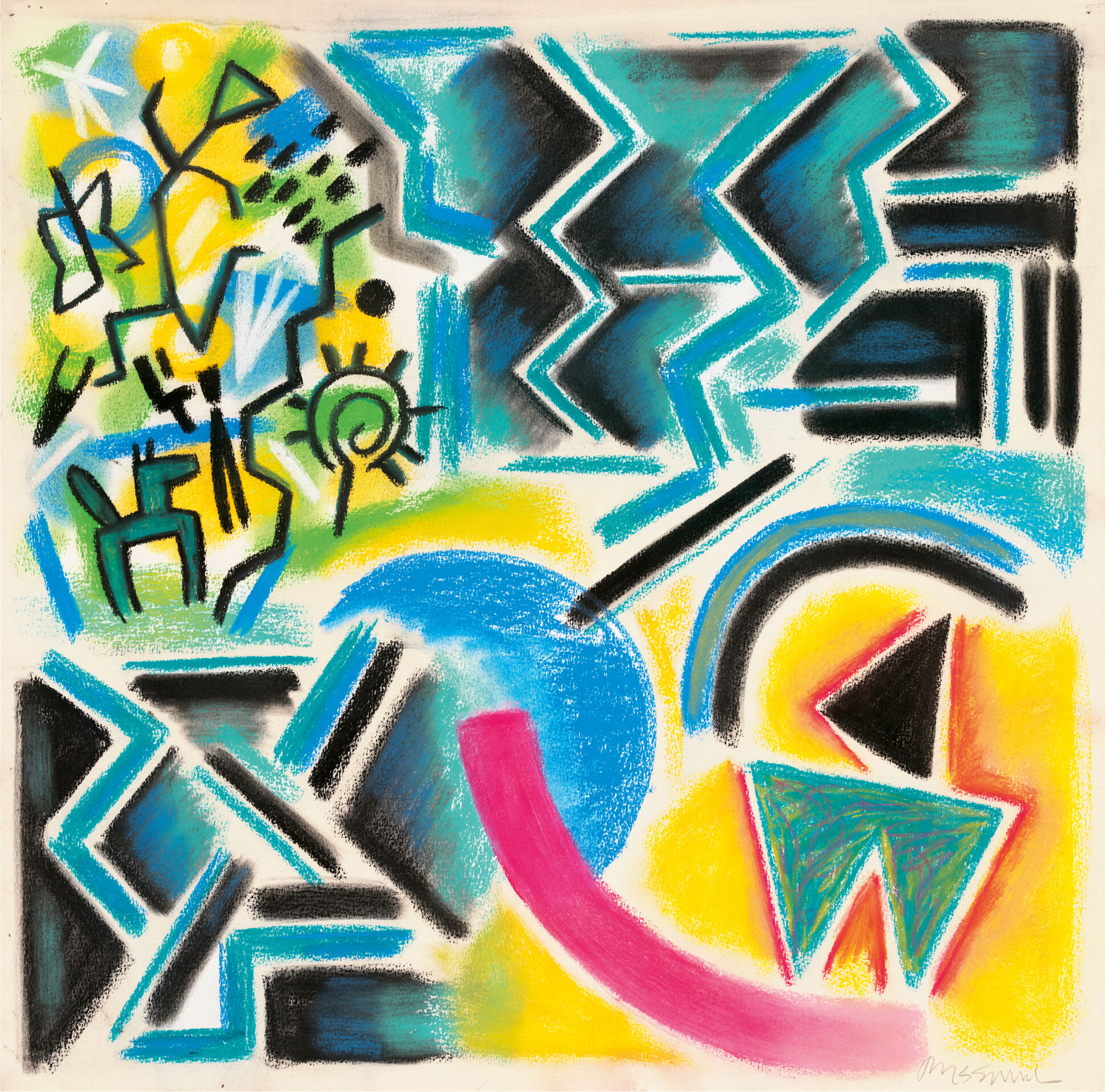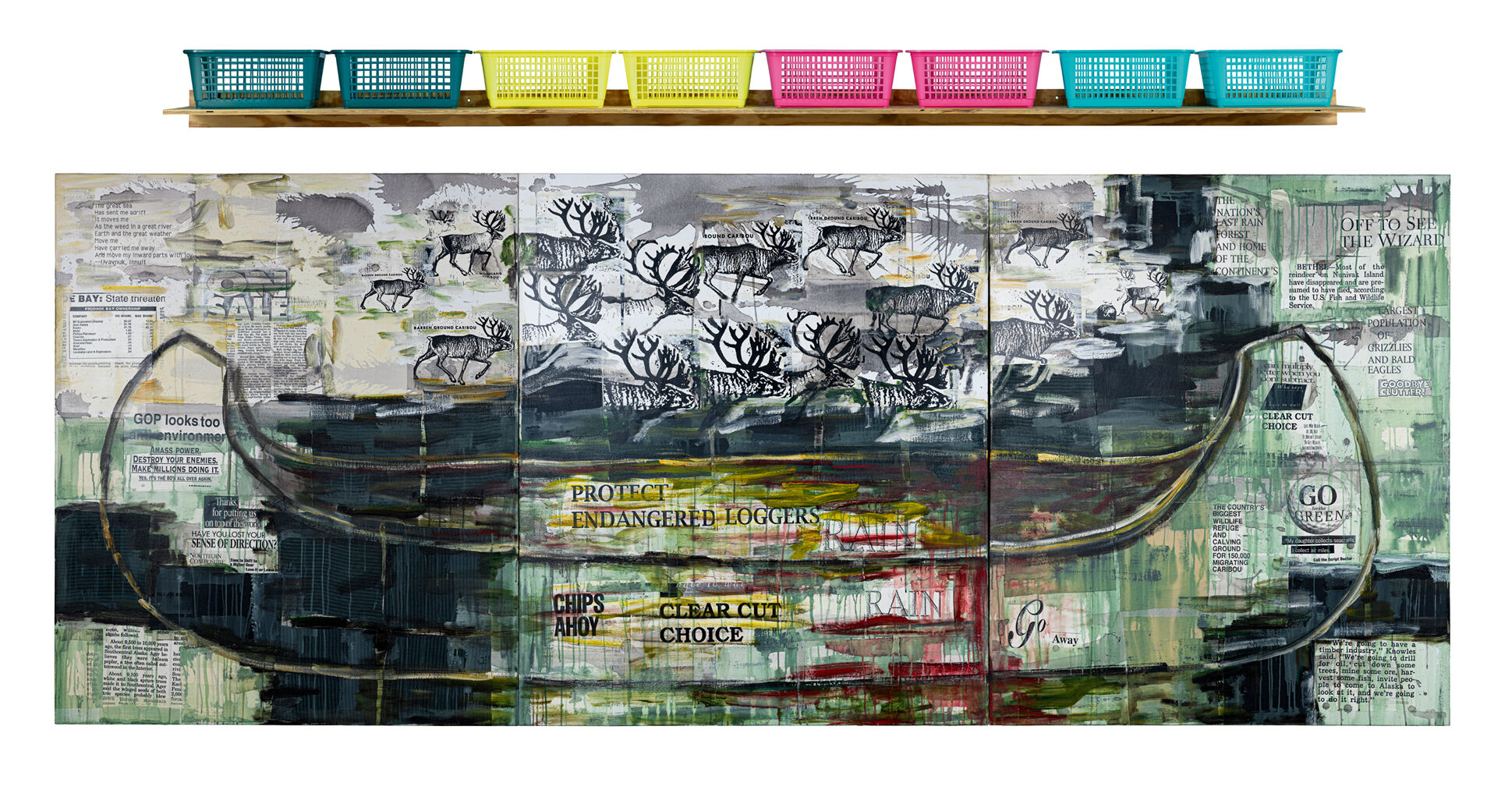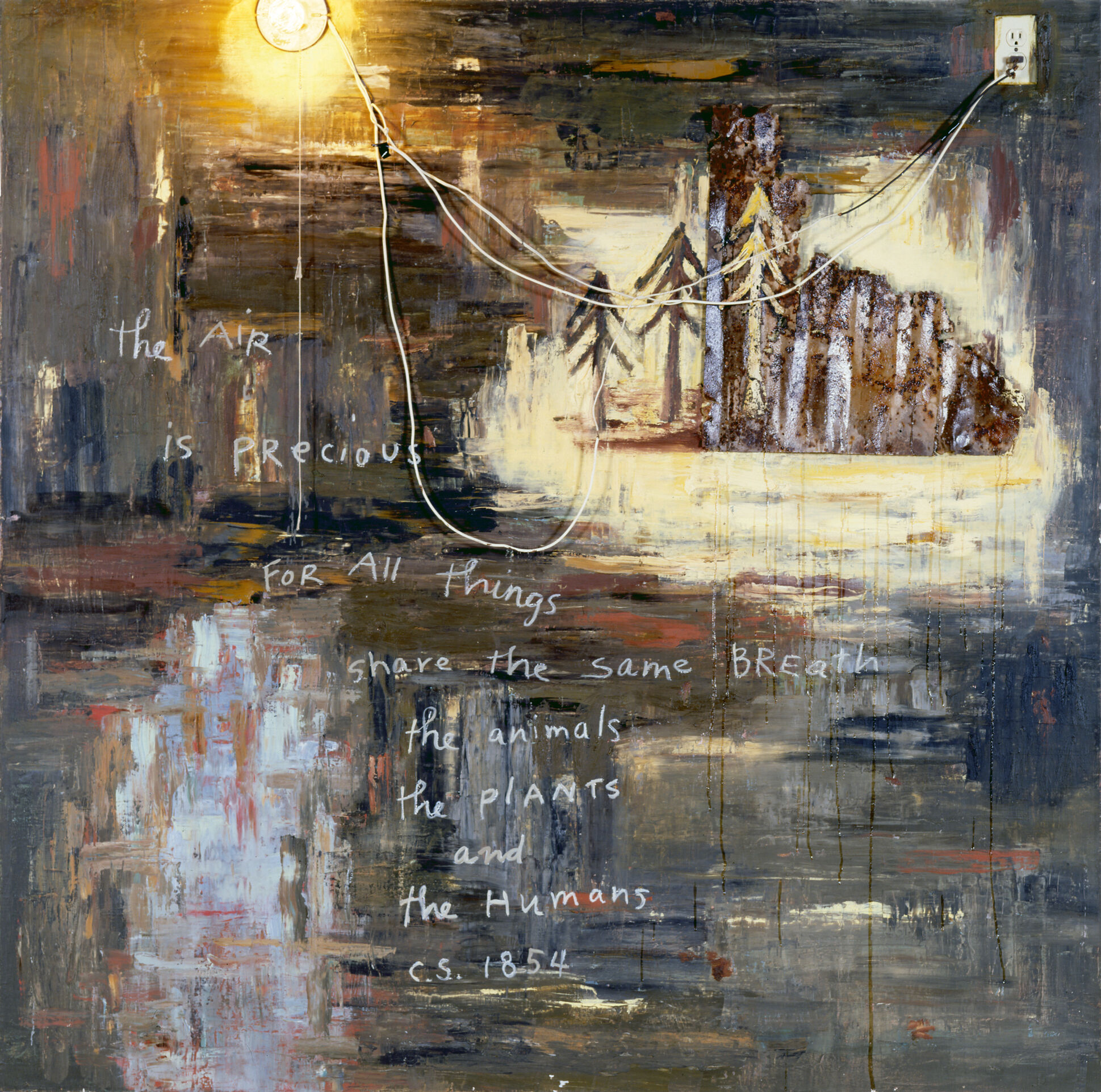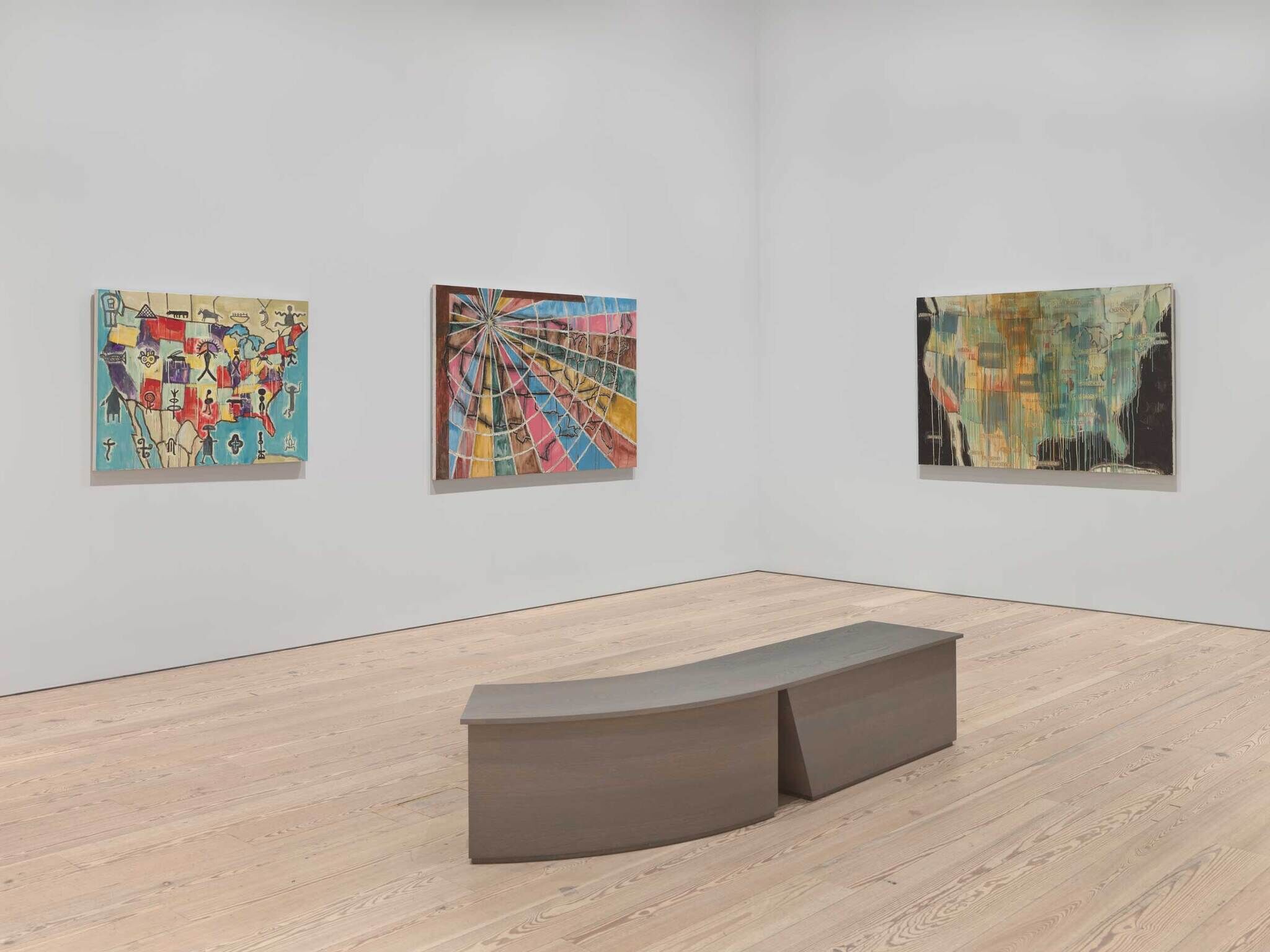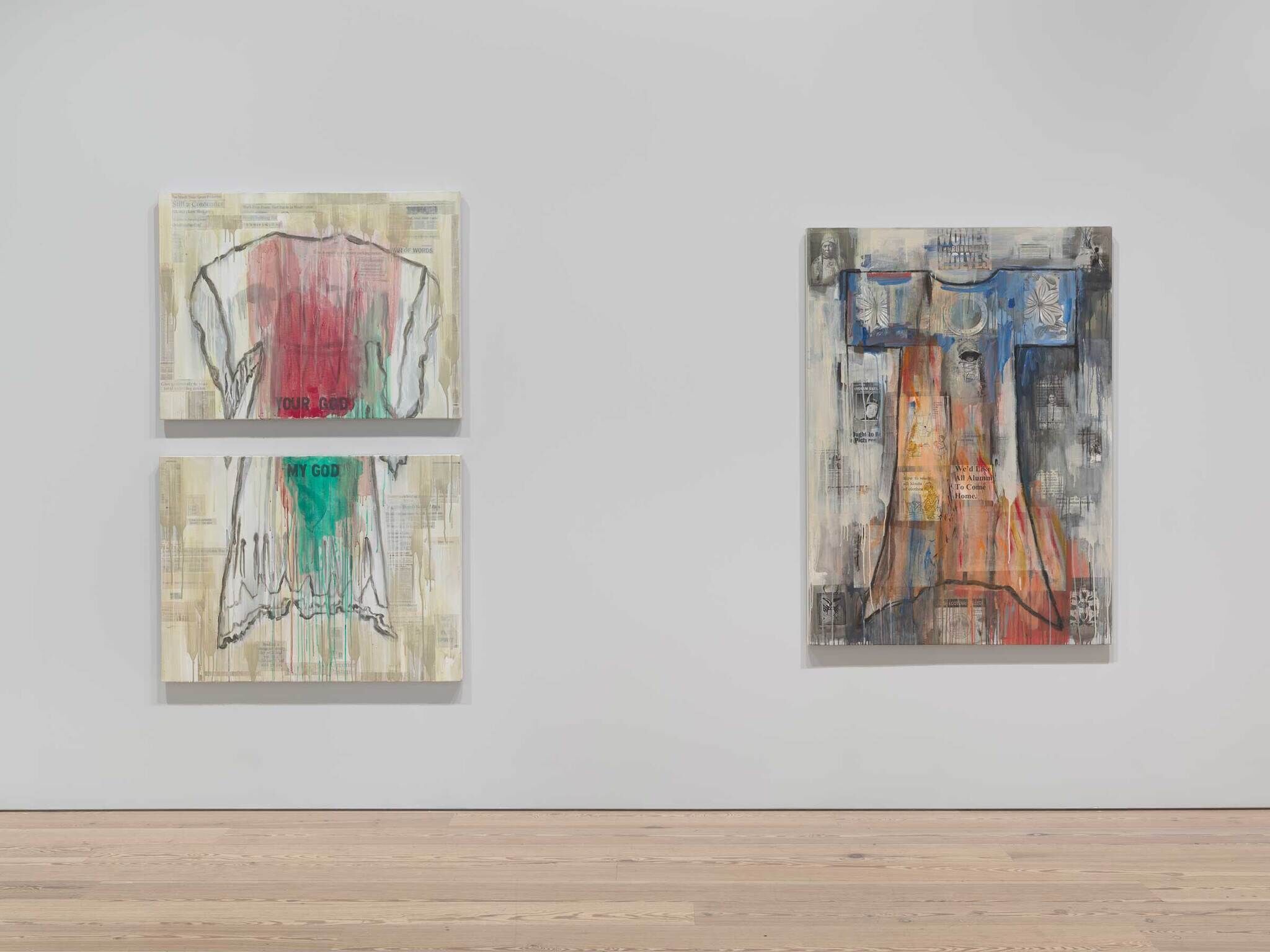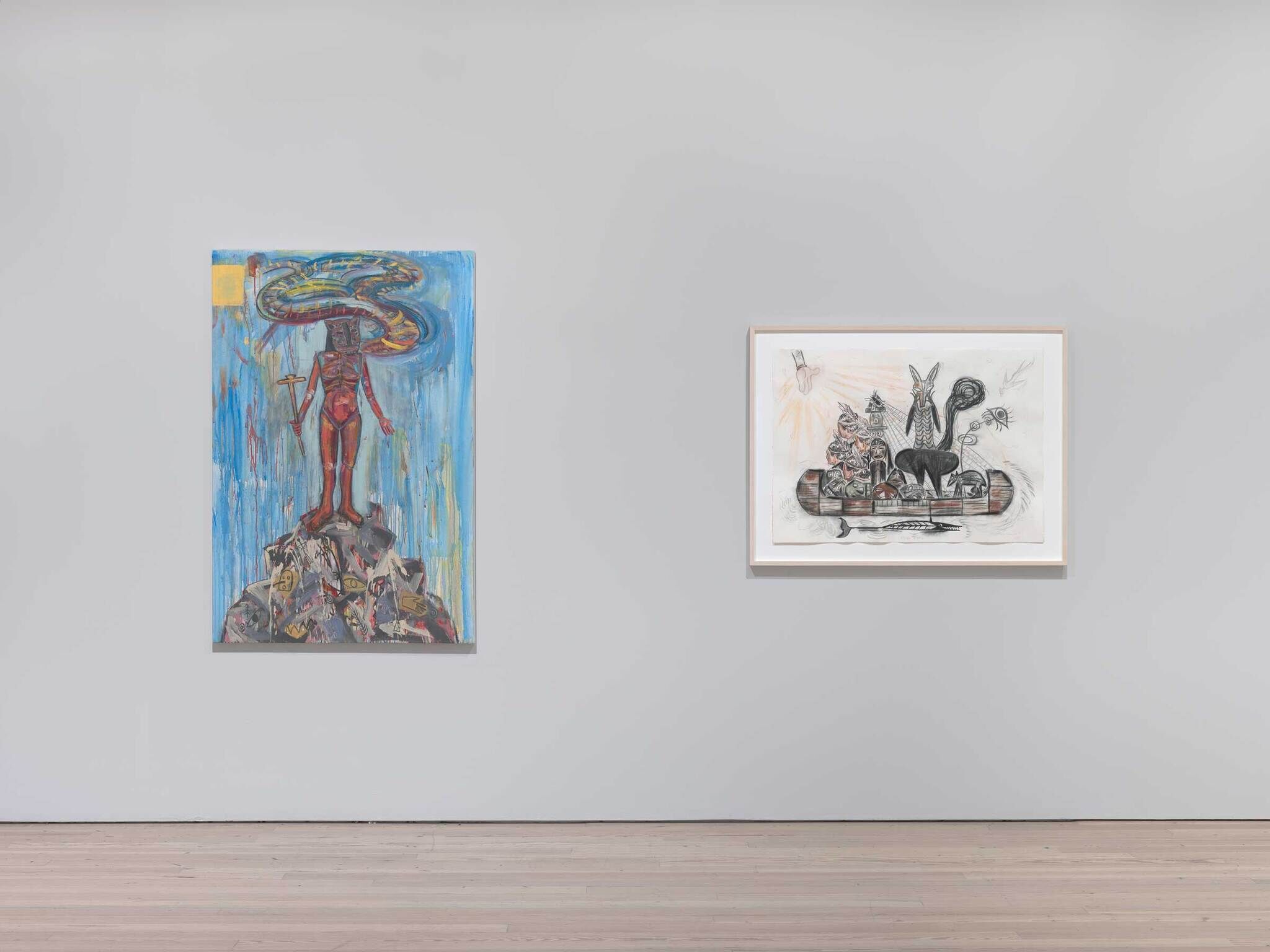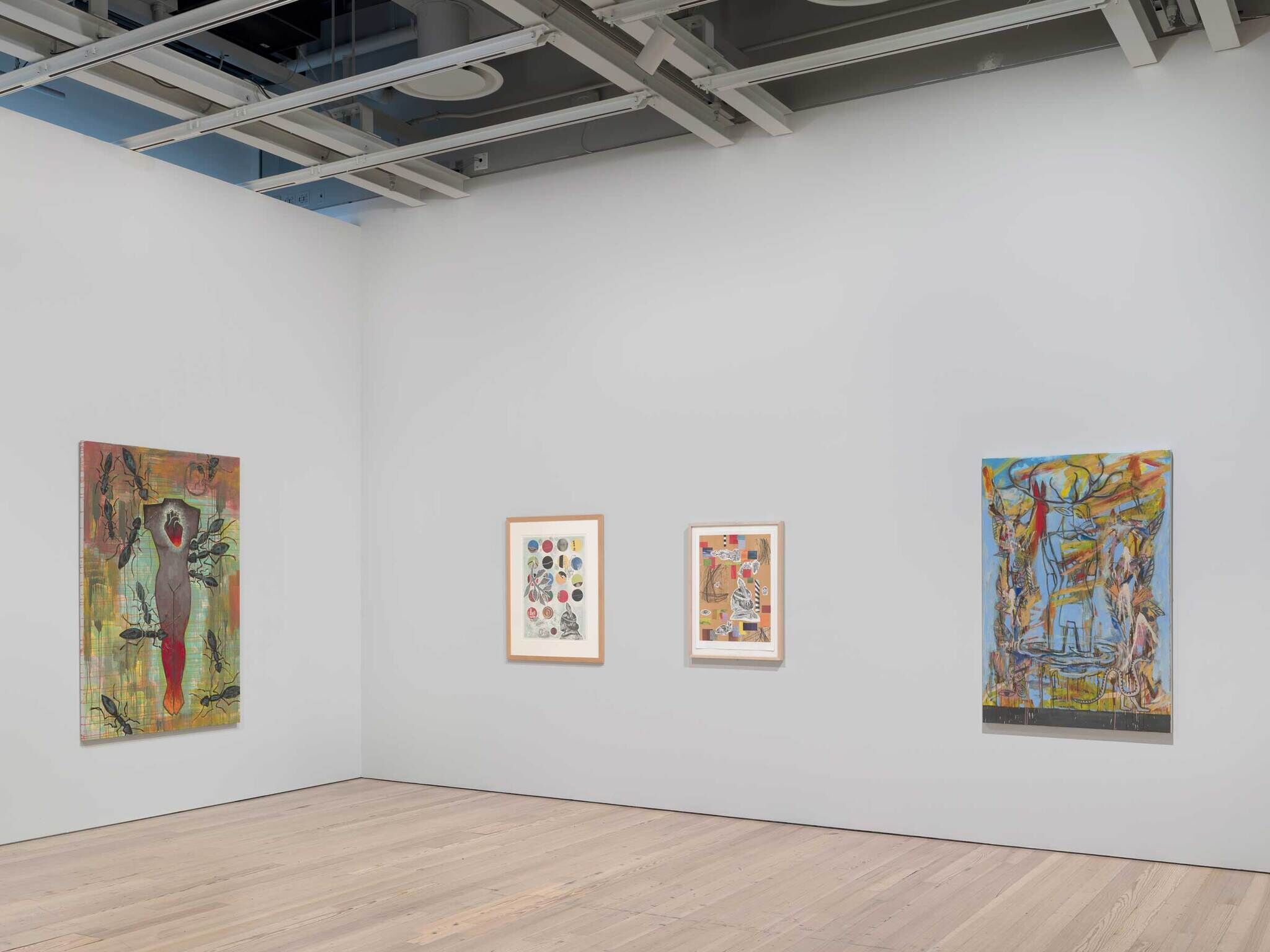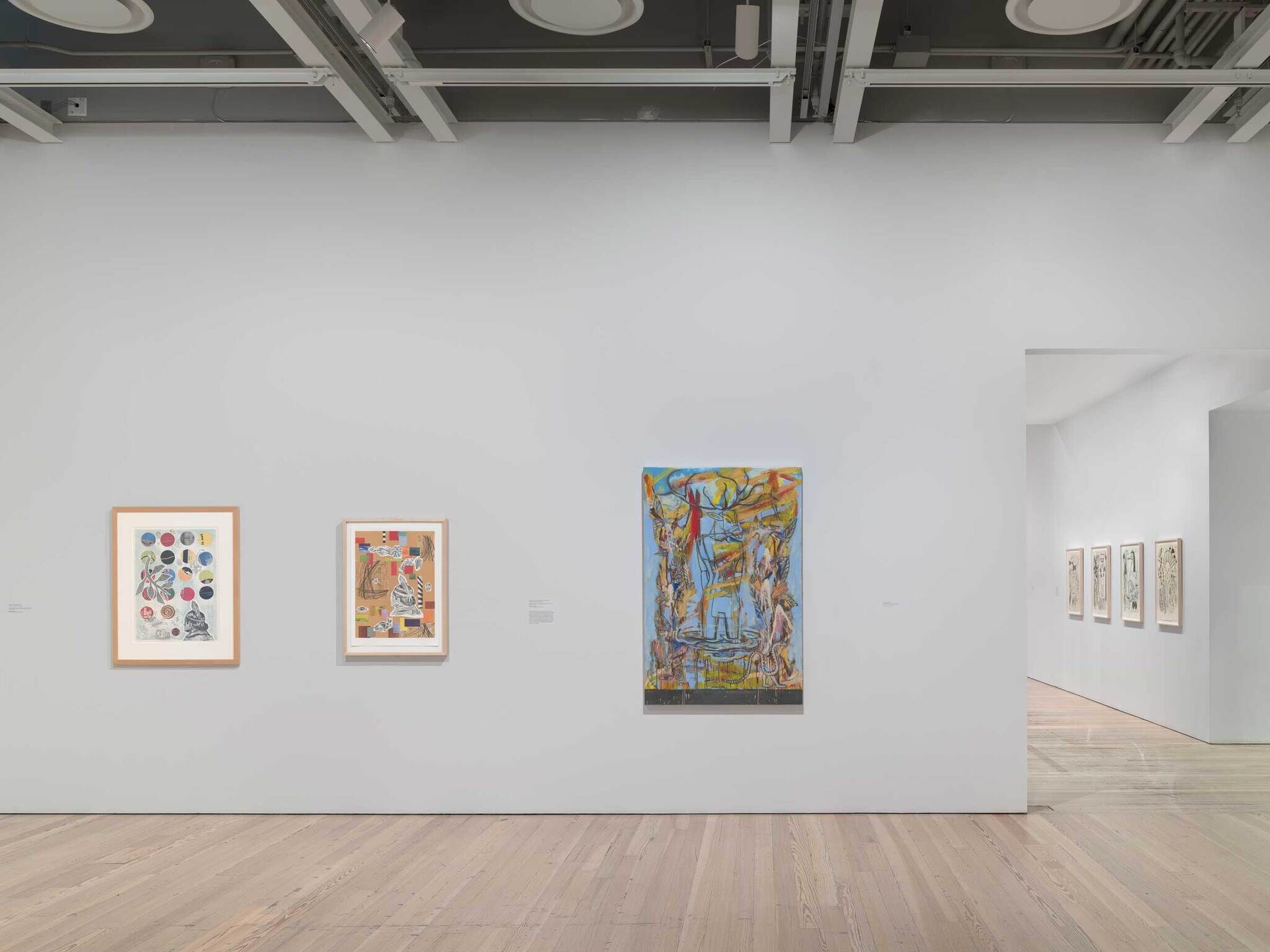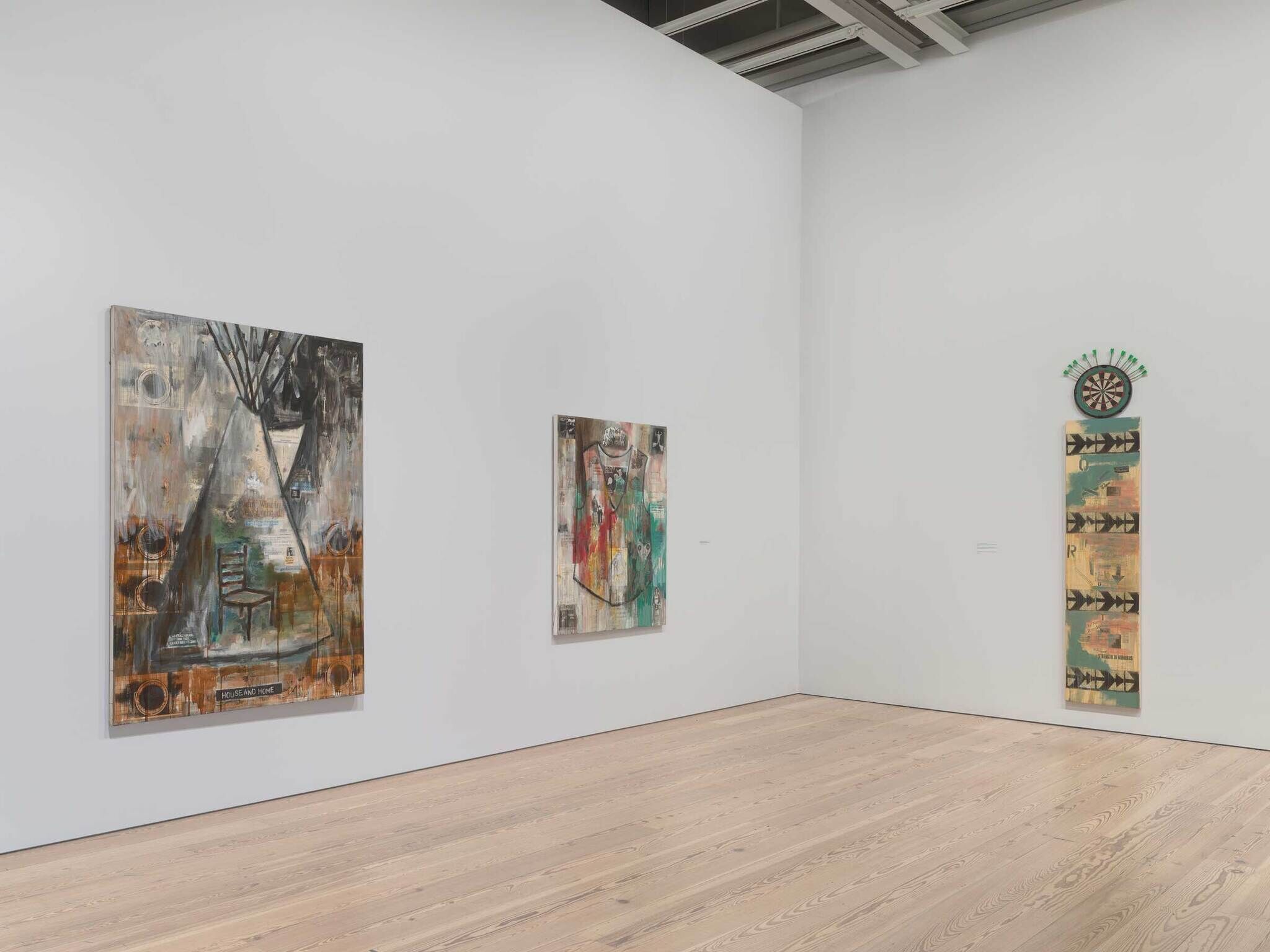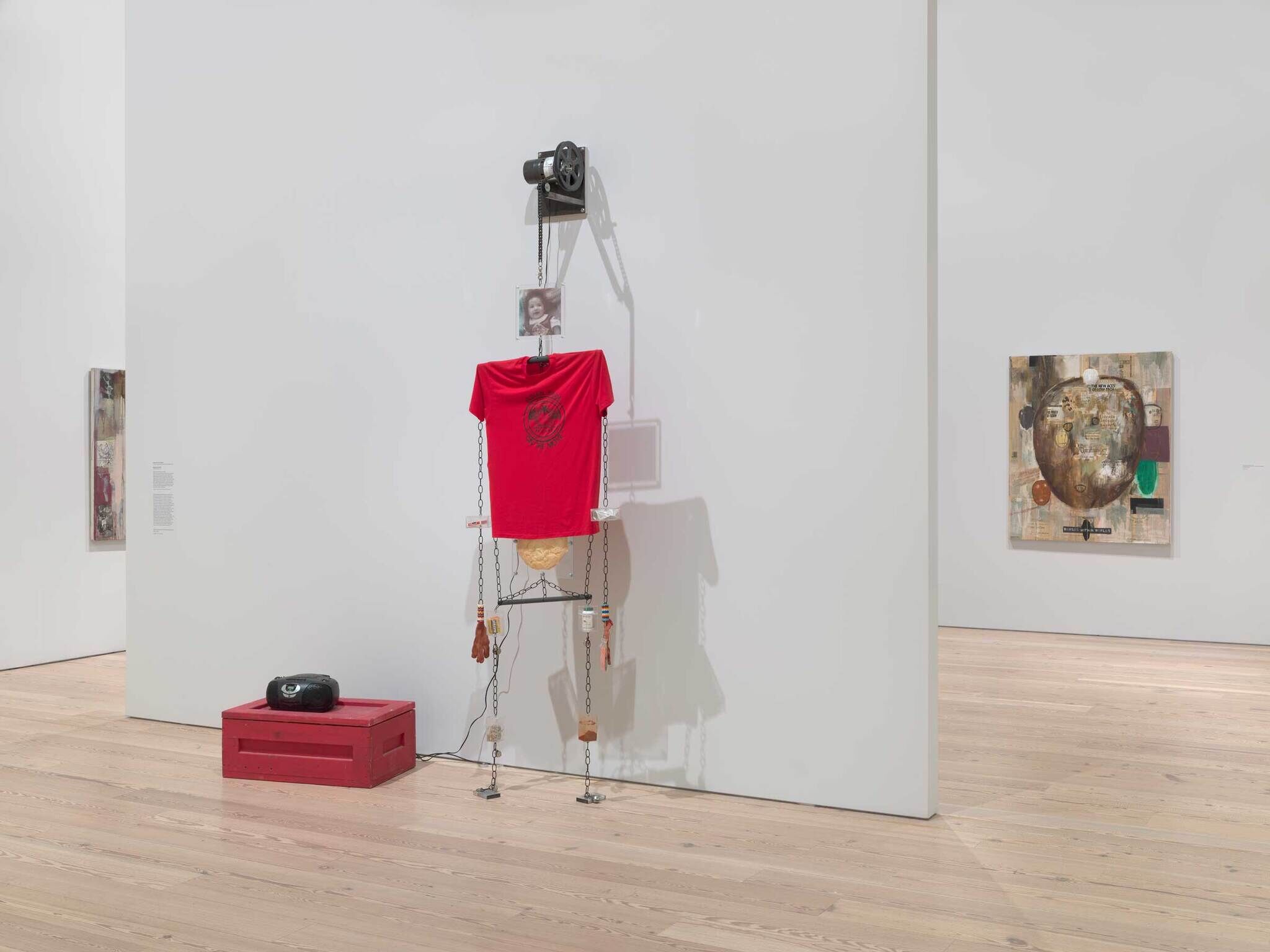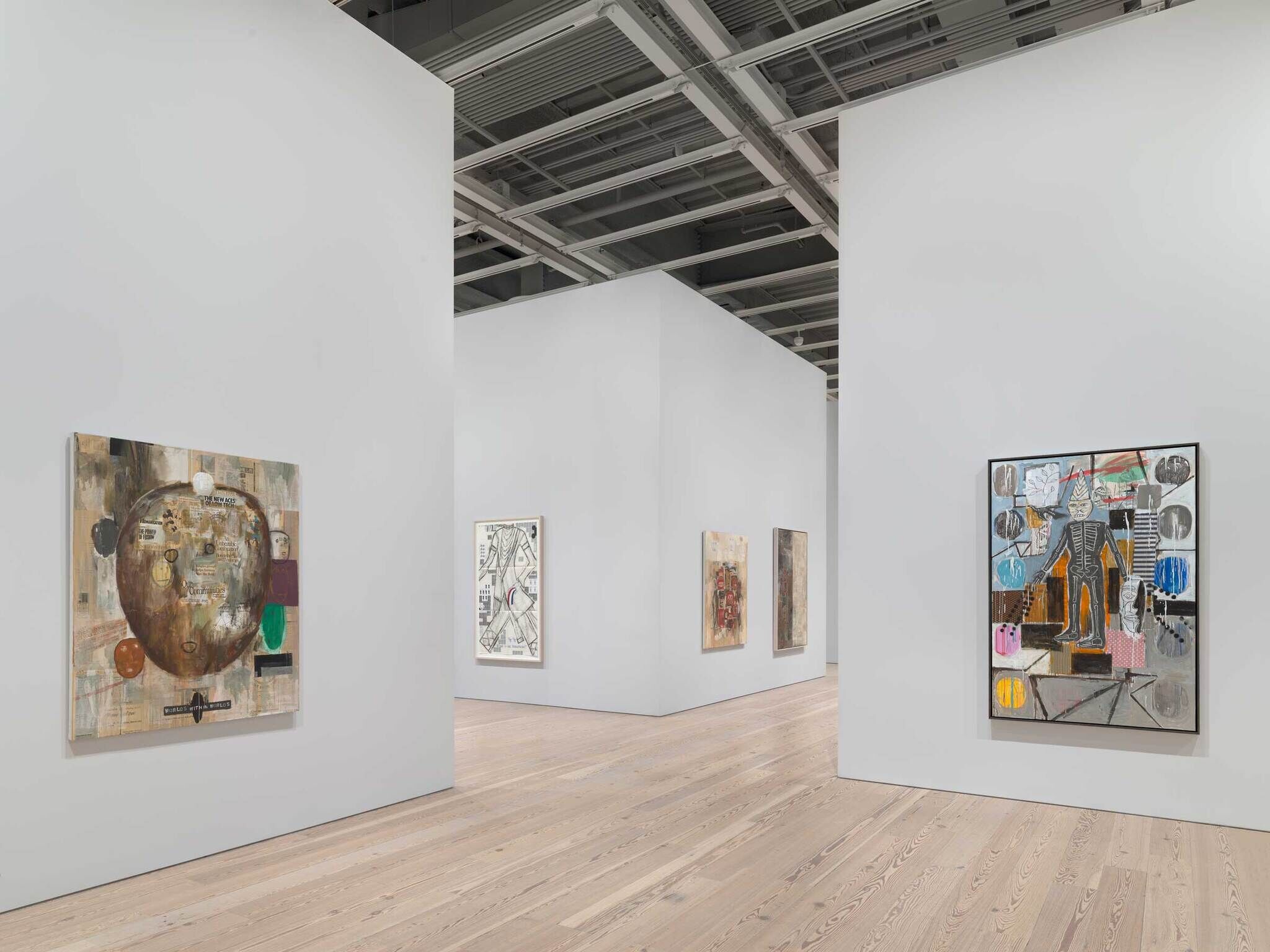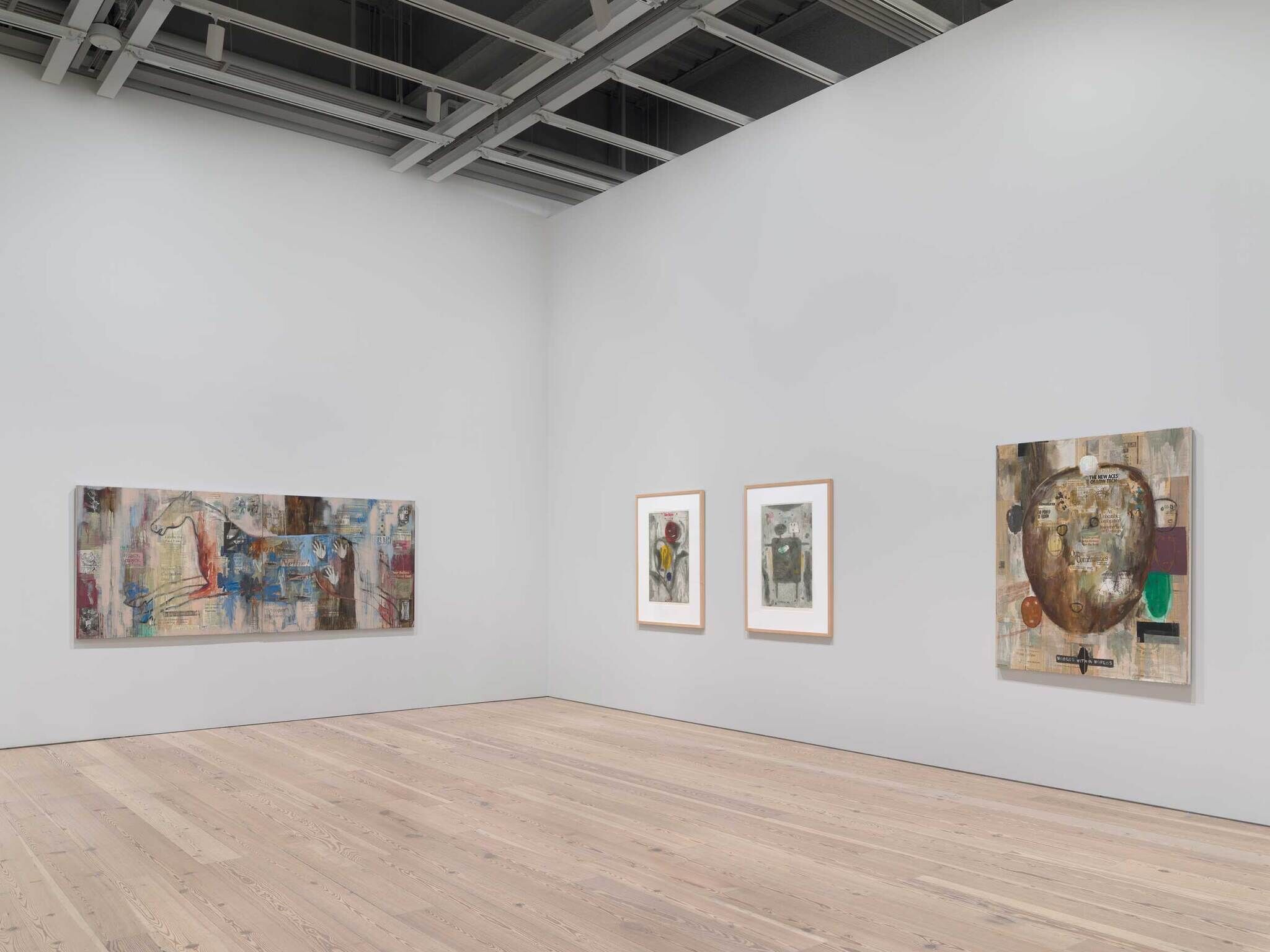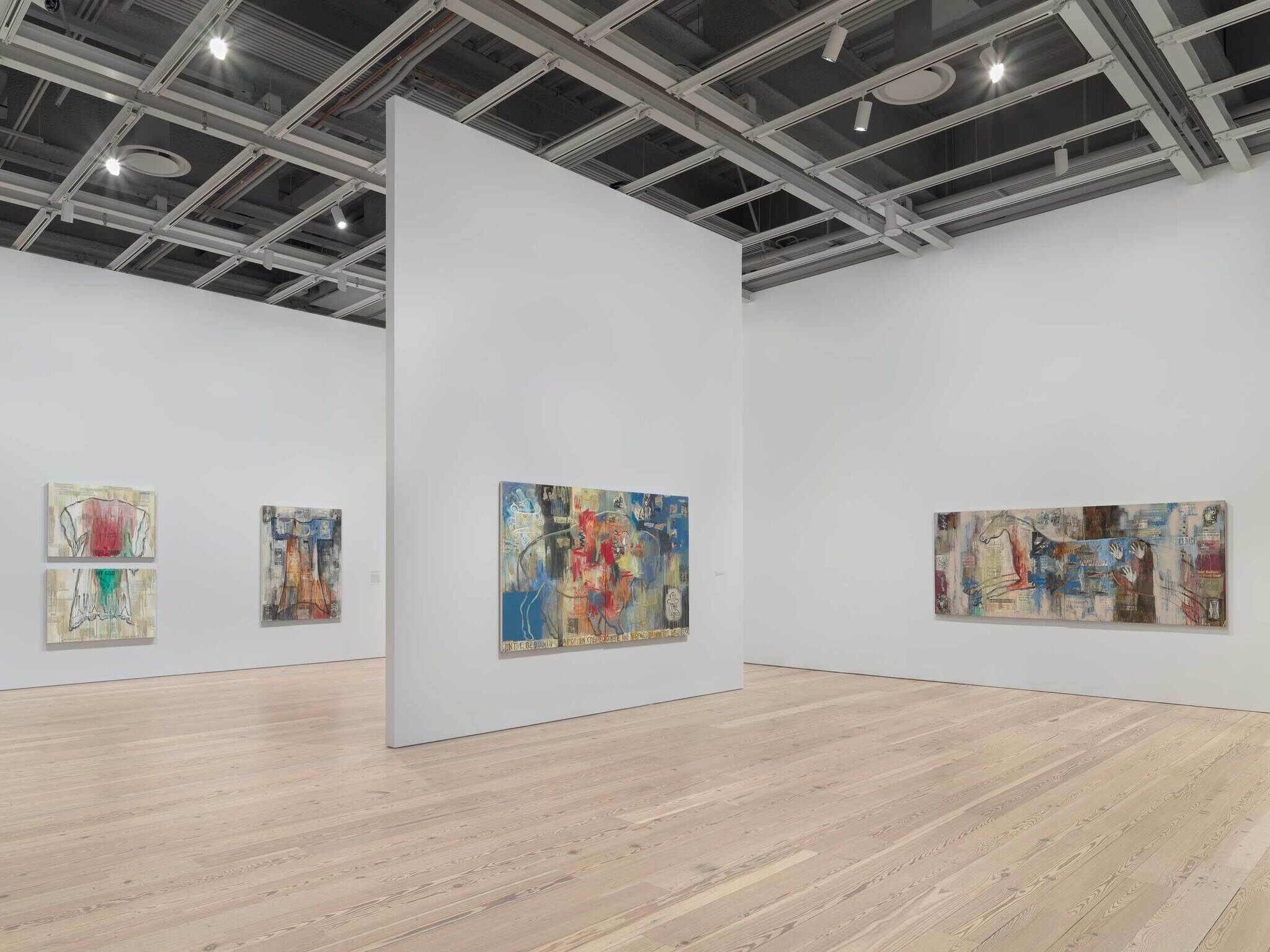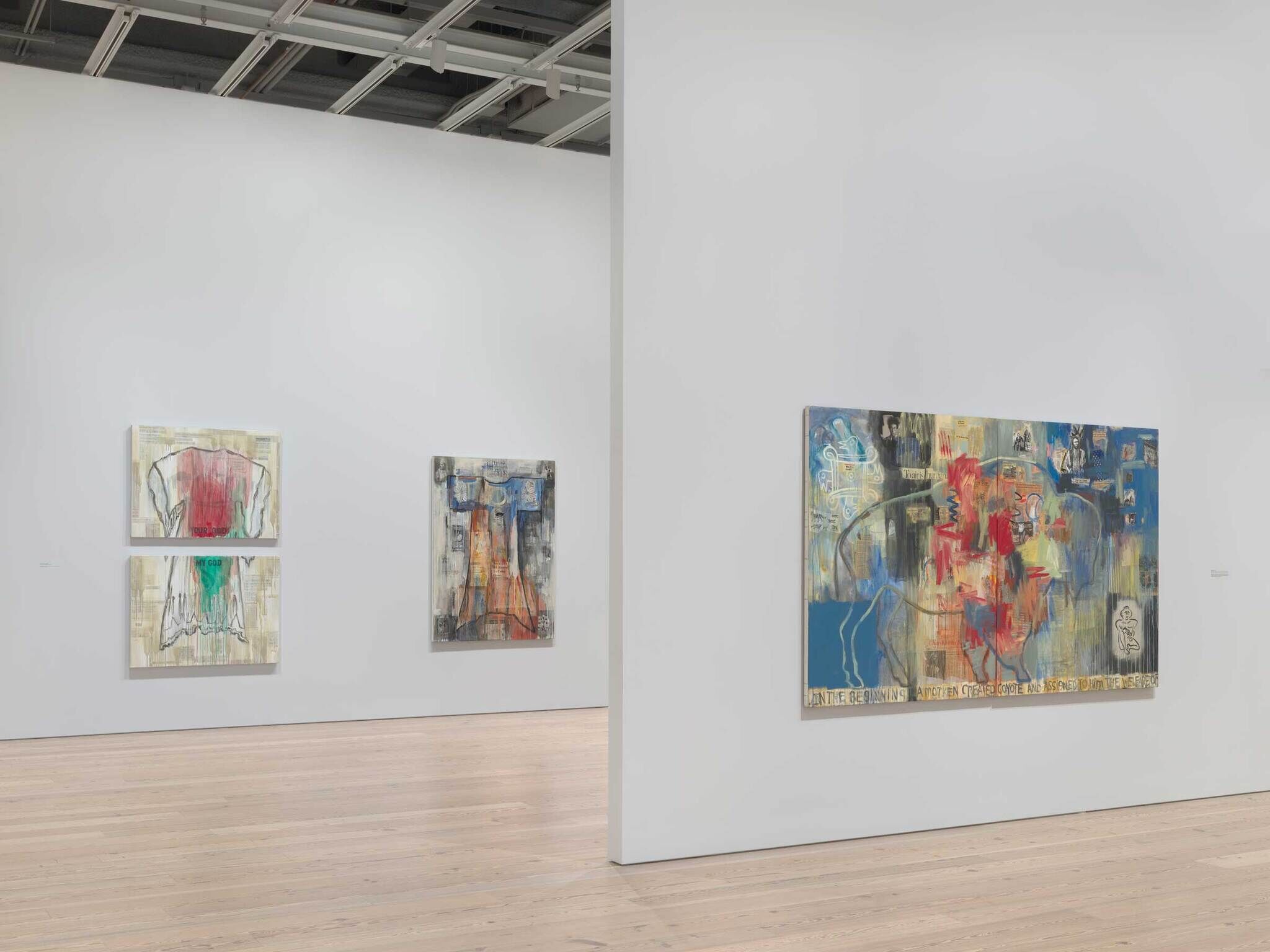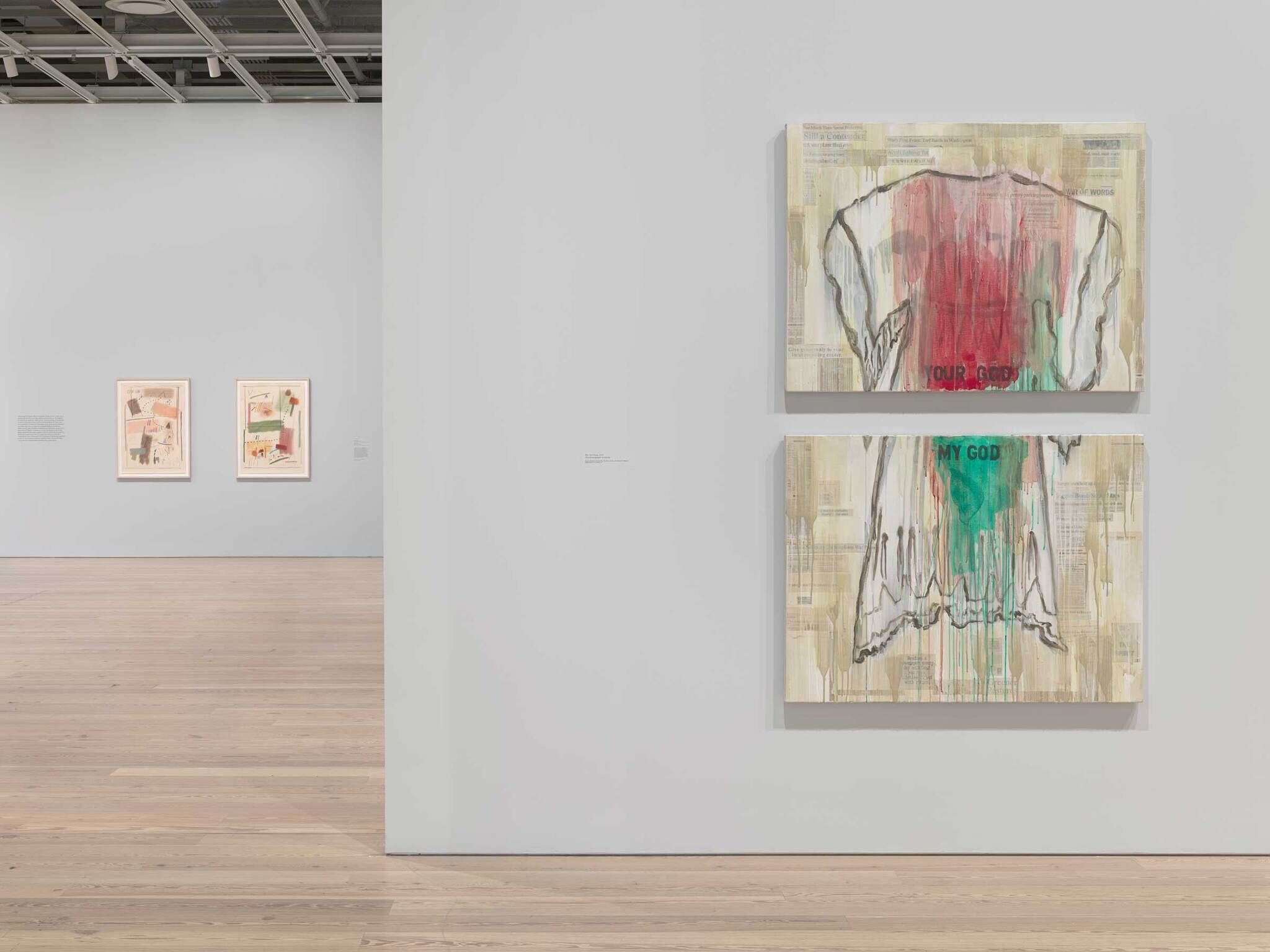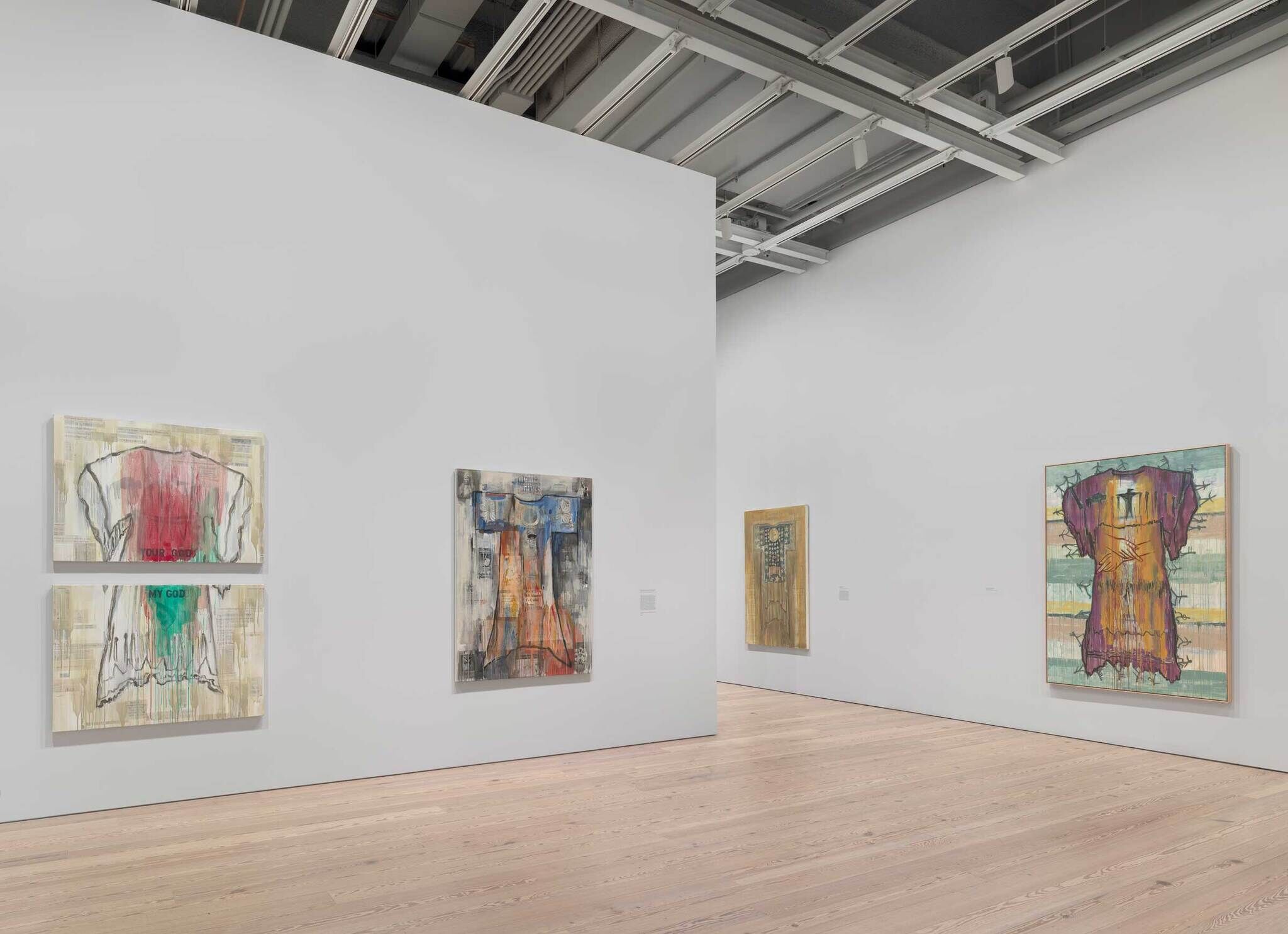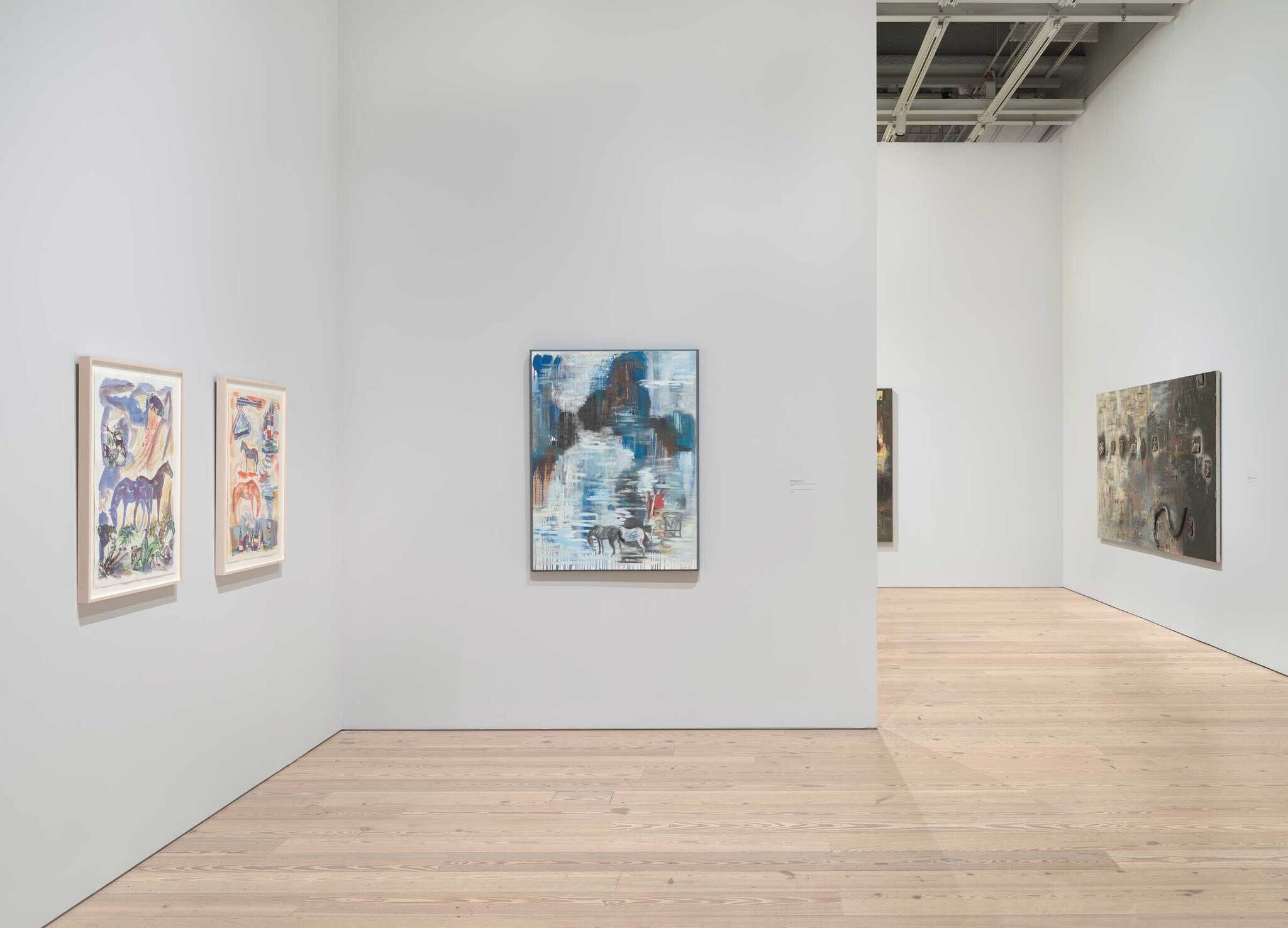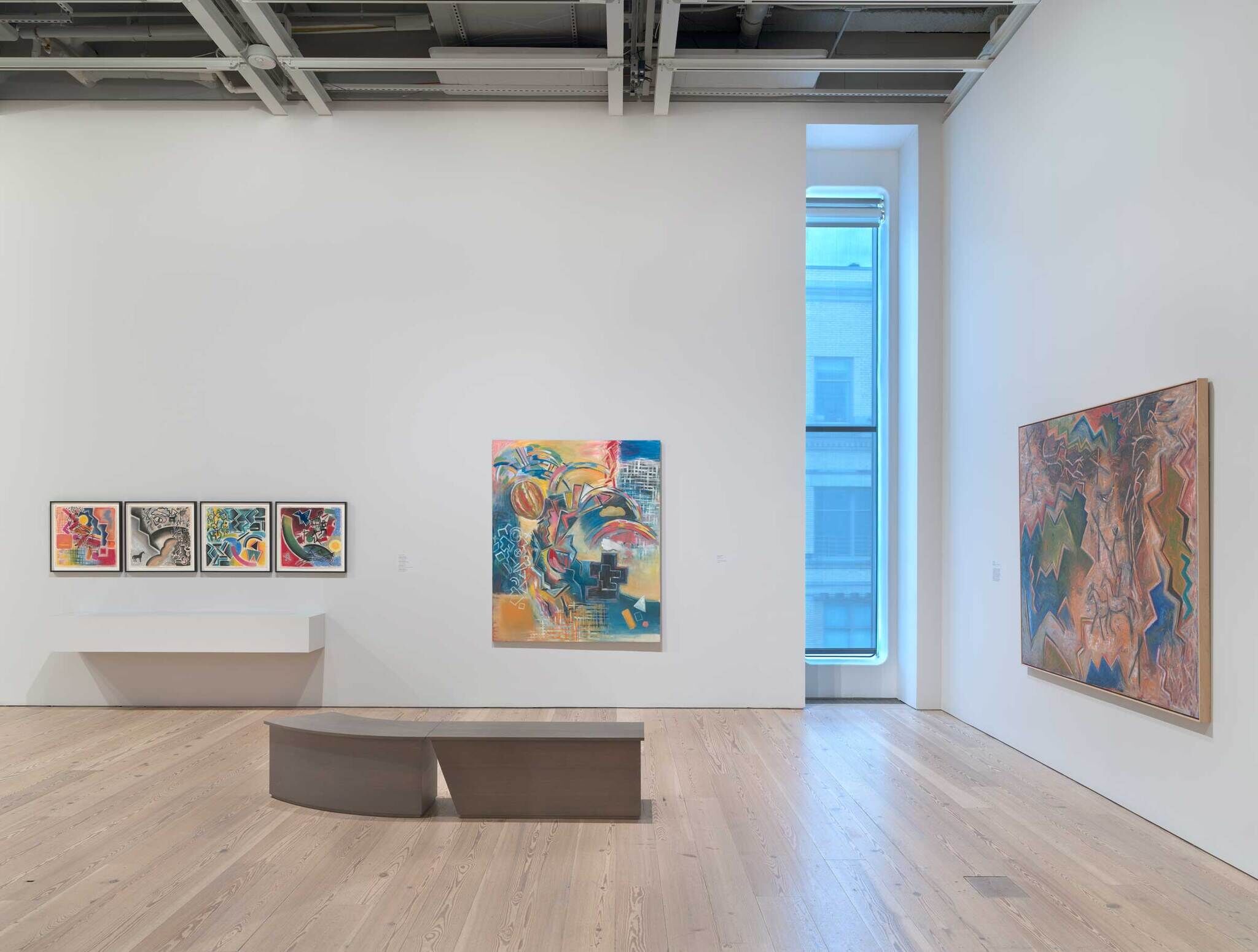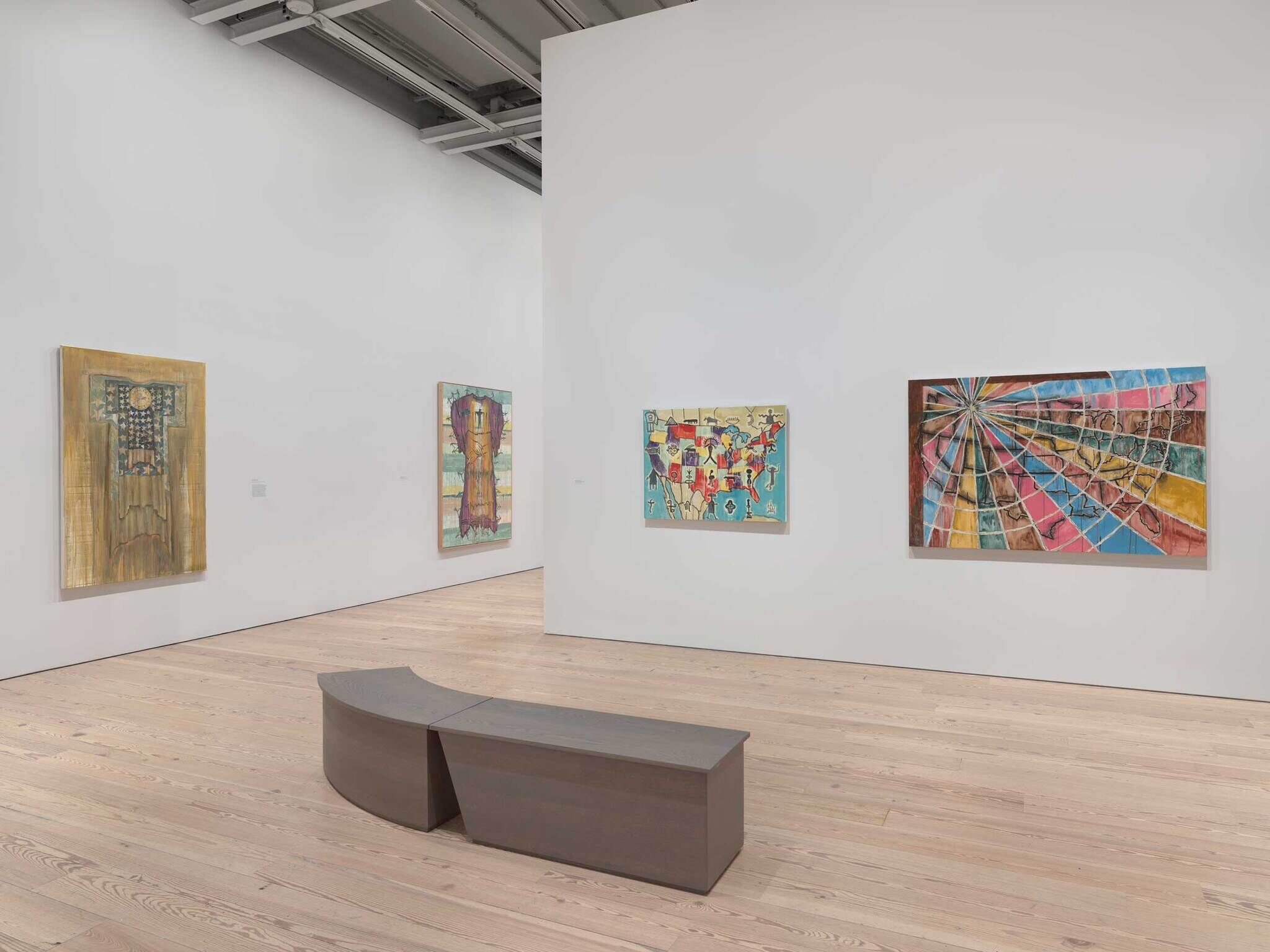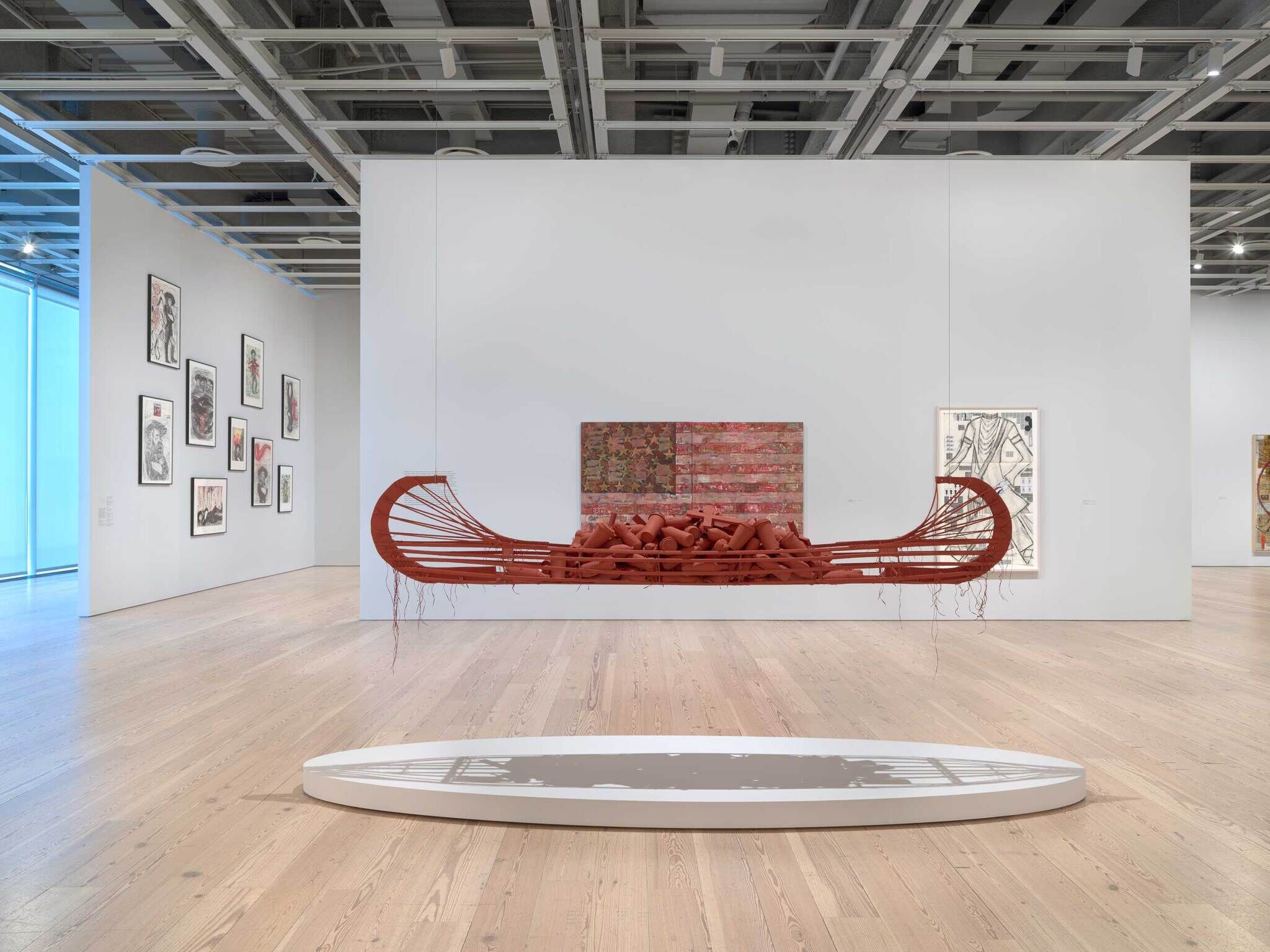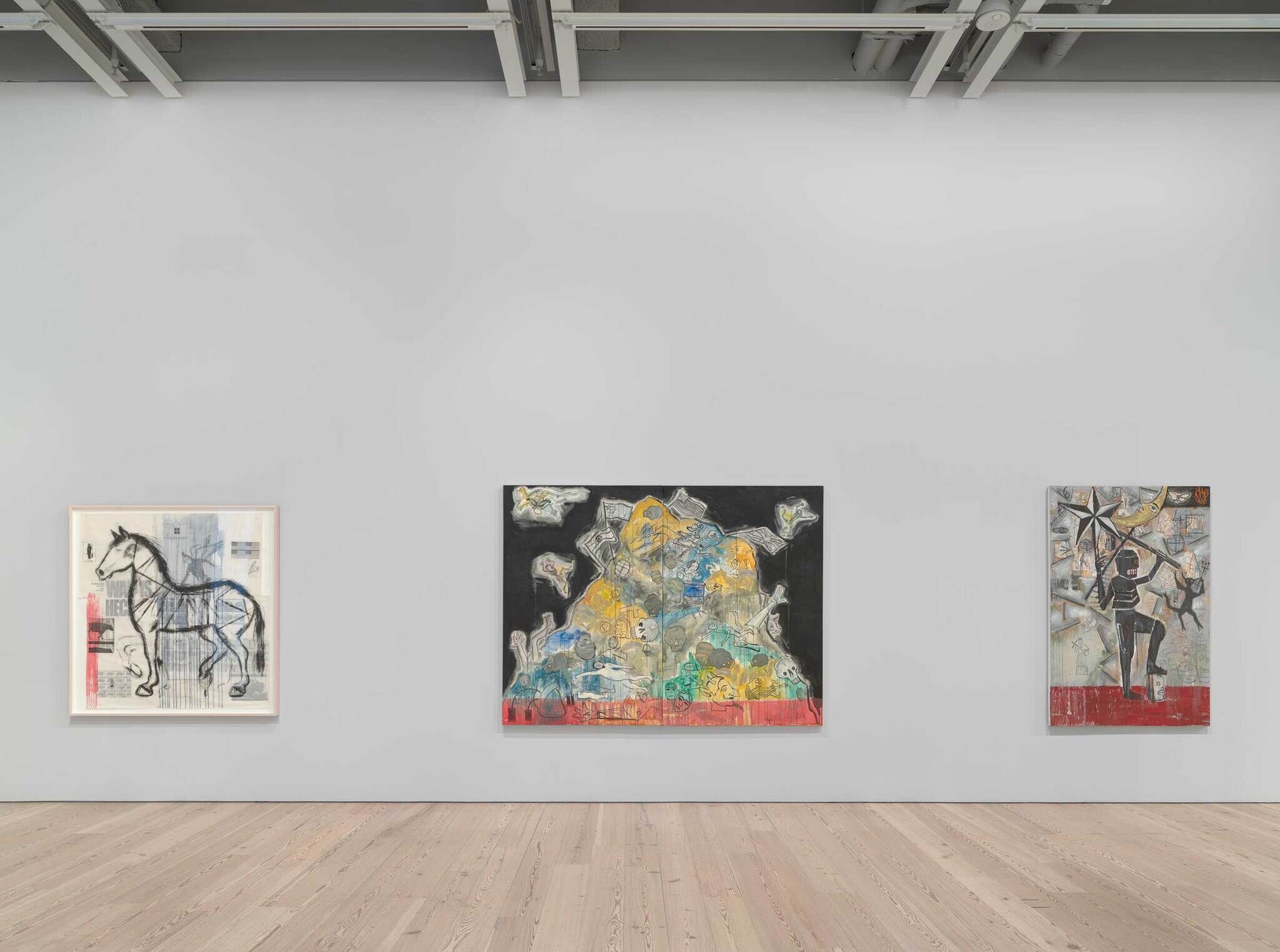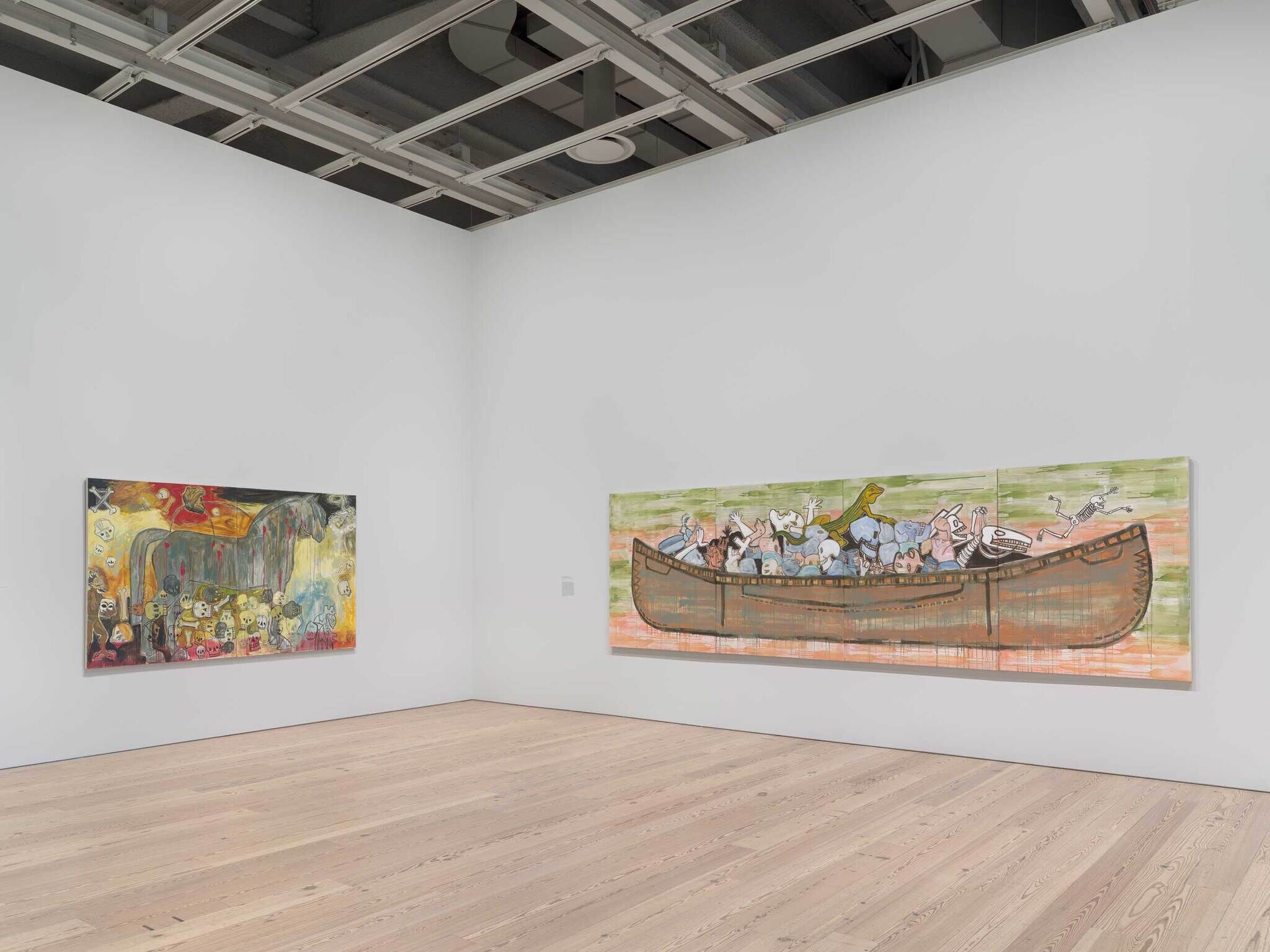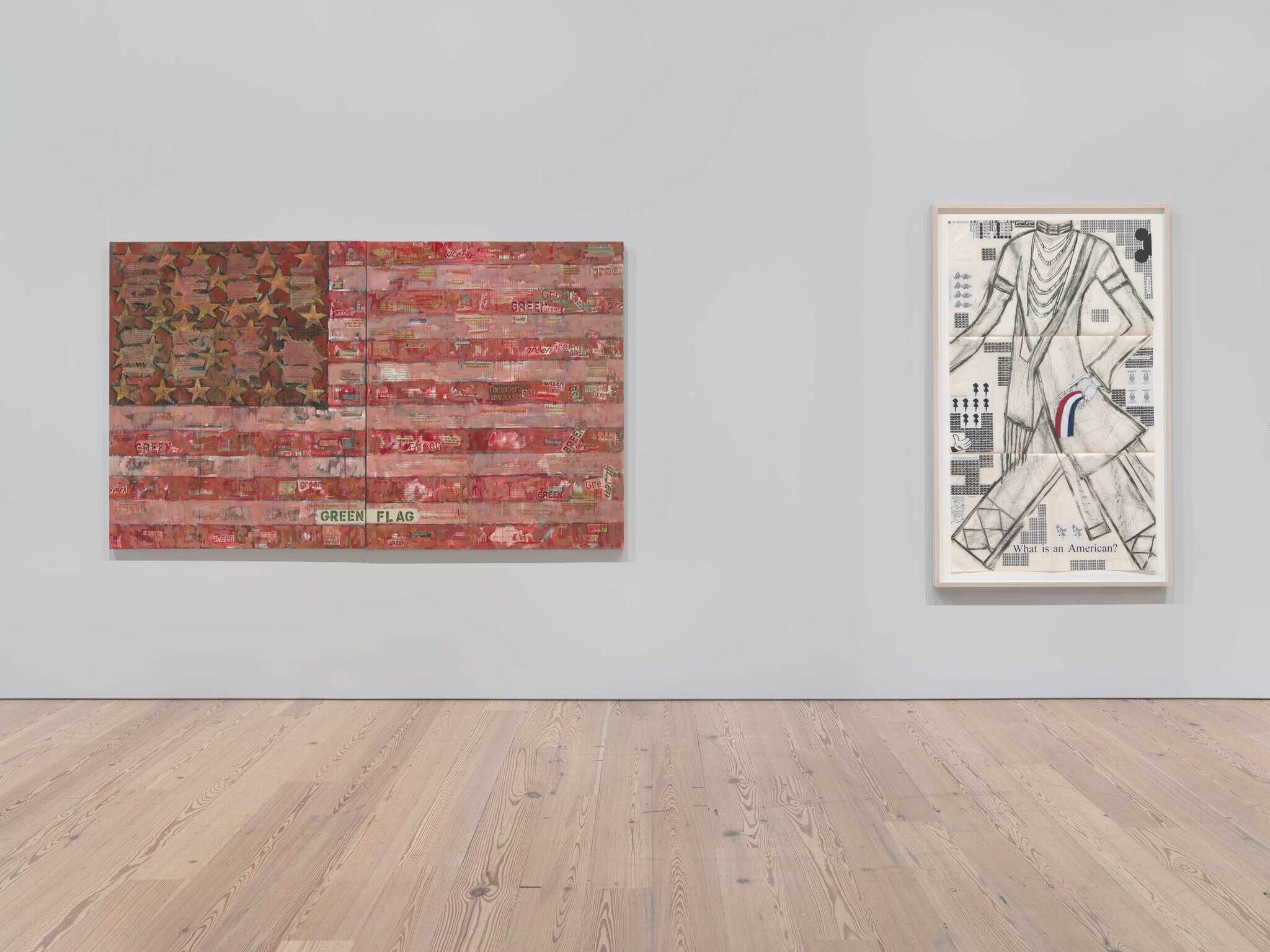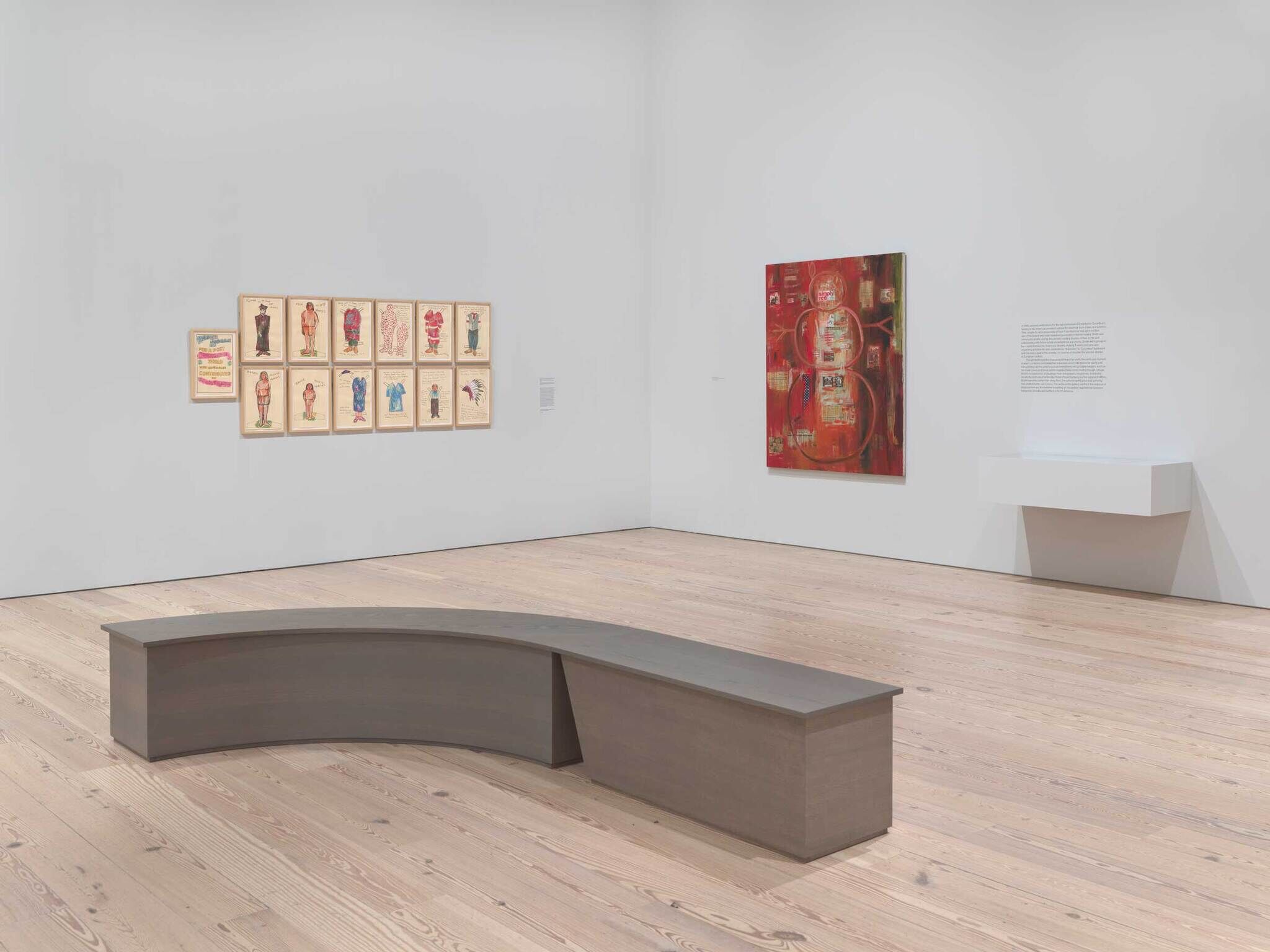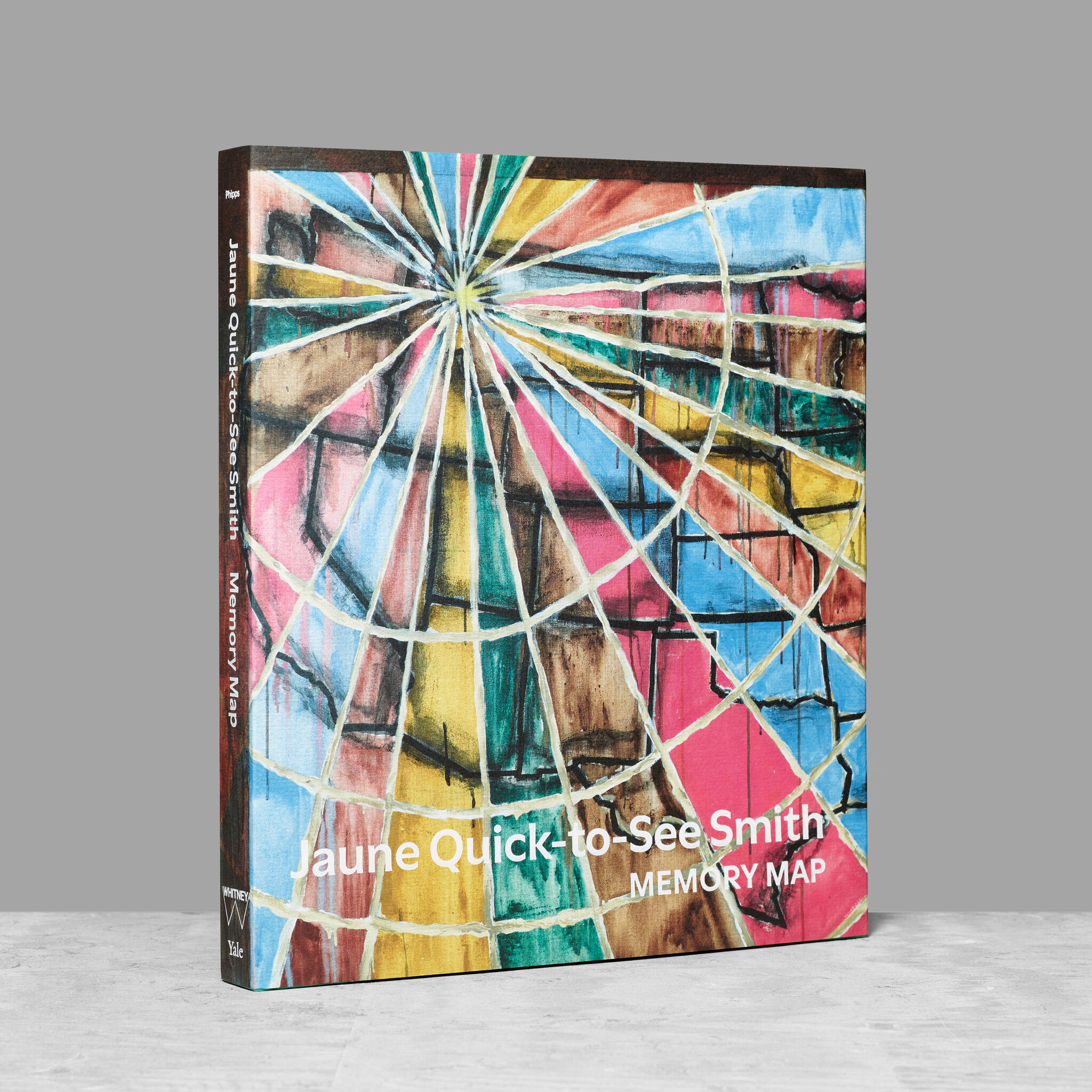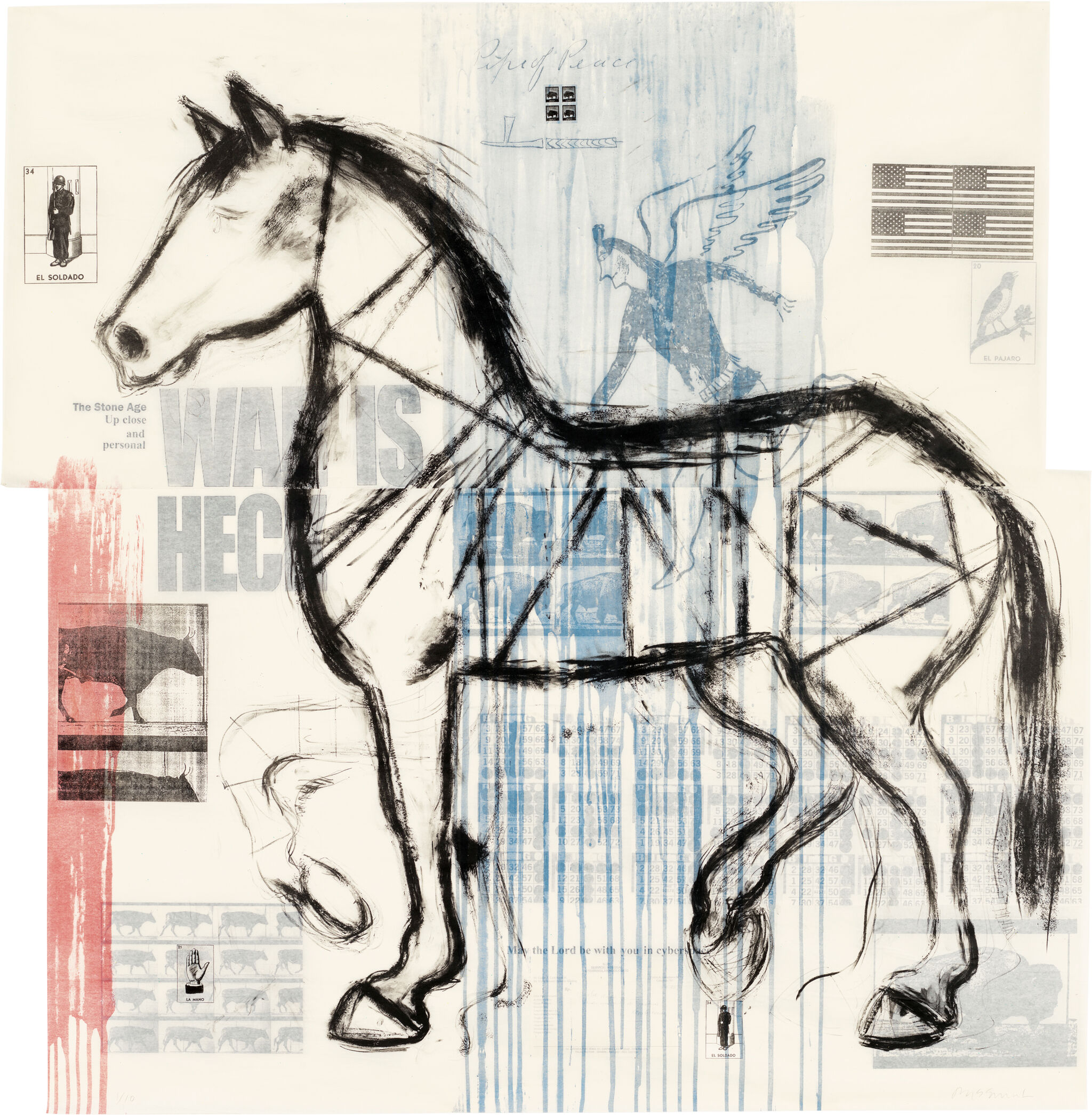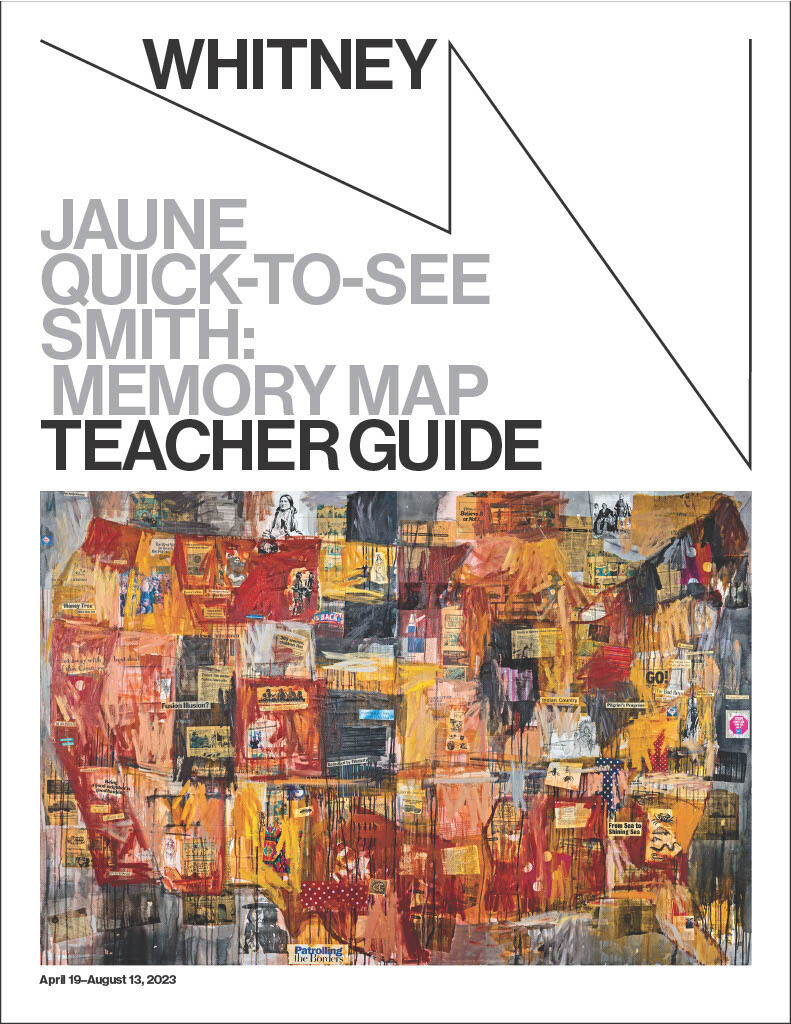Jaune Quick-to-See Smith:
Memory Map
Apr 19–Aug 13, 2023
This exhibition is the first New York retrospective of Jaune Quick-to-See Smith (b. 1940, citizen of the Confederated Salish and Kootenai Nation), an overdue but timely look at the work of a groundbreaking artist. Jaune Quick-to-See Smith: Memory Map brings together nearly five decades of Smith’s drawings, prints, paintings, and sculptures in the largest and most comprehensive showing of her career to date.
Smith’s work engages with contemporary modes of making, from her idiosyncratic adoption of abstraction to her reflections on American Pop art and neo-expressionism. These artistic traditions are incorporated and reimagined with concepts rooted in Smith’s own cultural practice, reflecting her belief that her “life’s work involves examining contemporary life in America and interpreting it through Native ideology.” Employing satire and humor, Smith’s art tells stories that flip commonly held conceptions of historical narratives and illuminate absurdities in the formation of dominant culture. Smith’s approach importantly blurs categories and questions why certain visual languages attain recognition, historical privilege, and value.
Across decades and mediums, Smith has deployed and reappropriated ideas of mapping, history, and environmentalism while incorporating personal and collective memories. The retrospective will offer new frameworks in which to consider contemporary Native American art and show how Smith has led and initiated some of the most pressing dialogues around land, racism, and cultural preservation—issues at the forefront of contemporary life and art today.
This exhibition is organized by Laura Phipps, Associate Curator at the Whitney Museum of American Art, with Caitlin Chaisson, Curatorial Project Assistant.
Generous support for Jaune Quick-to-See Smith: Memory Map is provided by Judy Hart Angelo; the Carl & Marilynn Thoma Foundation; Lise and Michael Evans; the Henry Luce Foundation; the Horace W. Goldsmith Foundation; Kevin and Rosemary McNeely, Manitou Fund; the Terra Foundation for American Art; and the Whitney’s National Committee.
Major support is provided by Forge Project, Garth Greenan Gallery, Sueyun and Gene Locks, and Susan and Larry Marx.
Significant support is provided by Chrissy Taylor and Lee Broughton, Stephanie and Tim Ingrassia, Ashley Leeds and Christopher Harland, Susan Hayden, John and Susan Horseman Collection/Horseman Foundation, The Keith Haring Foundation Exhibition Fund, the National Endowment for the Arts, Brooke Garber Neidich and Daniel M. Neidich, and Nancy and Fred Poses.
Additional support is provided by Furthermore: a program of the J. M. Kaplan Fund and Komal Shah and Gaurav Garg.


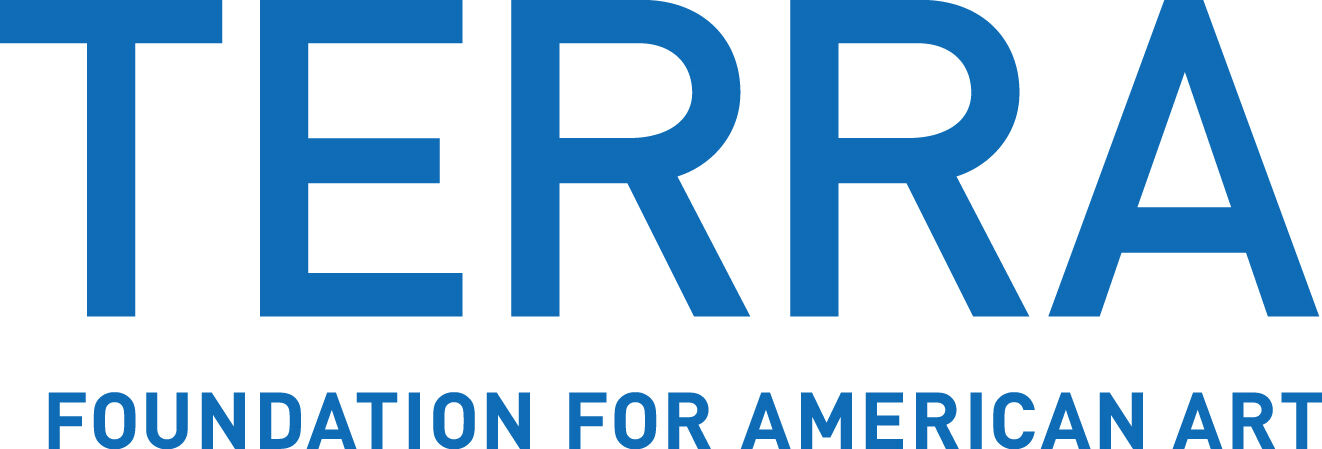

En Español
Esta exposición es la primera retrospectiva que se presenta en Nueva York de la obra de Jaune Quick-to-See Smith (n. 1940, ciudadana de la nación confederada Salish y Kootenai), una esperada y oportuna mirada al trabajo de la innovadora artista. Jaune Quick-to-See Smith: Memory Map [Jaune Quick-to-See Smith: Mapa de la memoria] aglomera casi cinco décadas de los dibujos, grabados, pinturas y esculturas de Smith, en la mayor y más abarcadora muestra de su carrera hasta la fecha.
La obra de Smith se involucra con modos contemporáneos de producción, incluyendo su adopción idiosincrática de la abstracción y sus reflexiones sobre el arte pop estadounidense y el neo-expresionismo. Estas tradiciones artísticas se reincorporan y reimaginan a través de conceptos enraizados en las prácticas culturales propias de Smith, reflejando su creencia en que “el trabajo de vida implica examinar la vida contemporánea en Estados Unidos e interpretarla a través de la ideología de los pueblos nativos”. Mediante la sátira y el humor, el arte de Smith cuenta historias que invierten concepciones comunes sobre narrativas históricas e iluminan los absurdos presentes en la cultura dominante. El punto de vista de Smith difumina categorías significativamente y se cuestiona por qué ciertos lenguajes visuales adquieren reconocimiento, privilegio histórico y valor.
A través de décadas y medios, Smith ha desplegado e incorporado ideas sobre la elaboración de mapas, la historia y el ambientalismo, a la vez que integra recuerdos personales y memoria colectiva. La retrospectiva ofrecerá nuevos ángulos para interpretar el arte contemporáneo nativoamericano y demostrará cómo Smith ha guidado e iniciado algunos de los diálogos más relevantes en torno a la tierra, el racismo y la preservación cultural, temas que están en la palestra de la vida y el arte contemporáneo hoy en día.
Esta exposición fue organizada por Laura Phipps, Curadora asistente en el Whitney Museum of American Art, junto a Caitlin Chaisson, Asistente de proyectos curatoriales.
For the Survival of Future Generations
2
In the mid-1980s, a proposed housing development in suburban Albuquerque, New Mexico, threatened to destroy a culturally significant lava-rock escarpment filled with ancient petroglyphs. Smith became involved with campaigns to save the area, which would eventually be recognized by the federal government as a national monument. The drawings and paintings of the Petroglyph Park series (1985–87) mark the first time Smith’s art responded to news reports of current events, an approach that became integral to later works.
The 1989–91 Chief Seattle (or C.S.) series continues Smith’s critique of unfettered industrialization and the reckless abuse of natural resources. These works grapple with broader global and regional concerns, such as the modern reliance on fossil fuels, a major contributor to acid rain. Smith combines objects like light bulbs, spoons, and garden hoses with canvases covered in thick paint, and overlays phrases attributed to the nineteenth-century Duwamish and Squamish leader Chief Si’ahl (Seattle) that emphasize the interdependence of humans and nature. Mainstream environmentalism at the time concentrated on issues like pollution and recycling, but Smith’s work draws a clear link between the exploitation of the land and the blatant disregard of treaties made between the US government and Native nations. With these paintings, Smith implores viewers to understand their connection to the earth and forestall ecological crisis for the survival of future generations.
Events
View all-
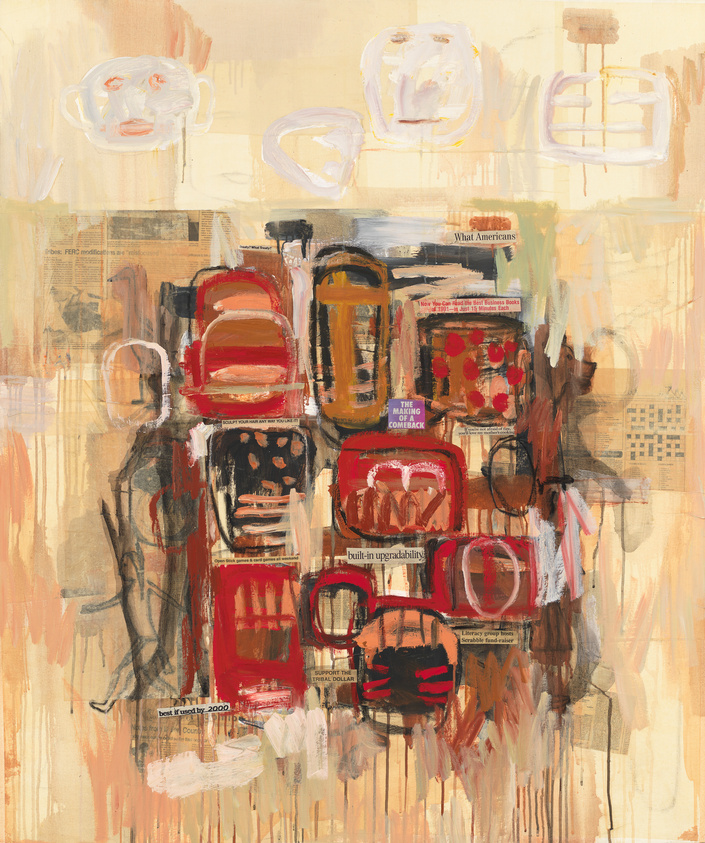
Weekend Member Mornings
Repeats
Saturday, August 12, 2023
10–10:30 am -
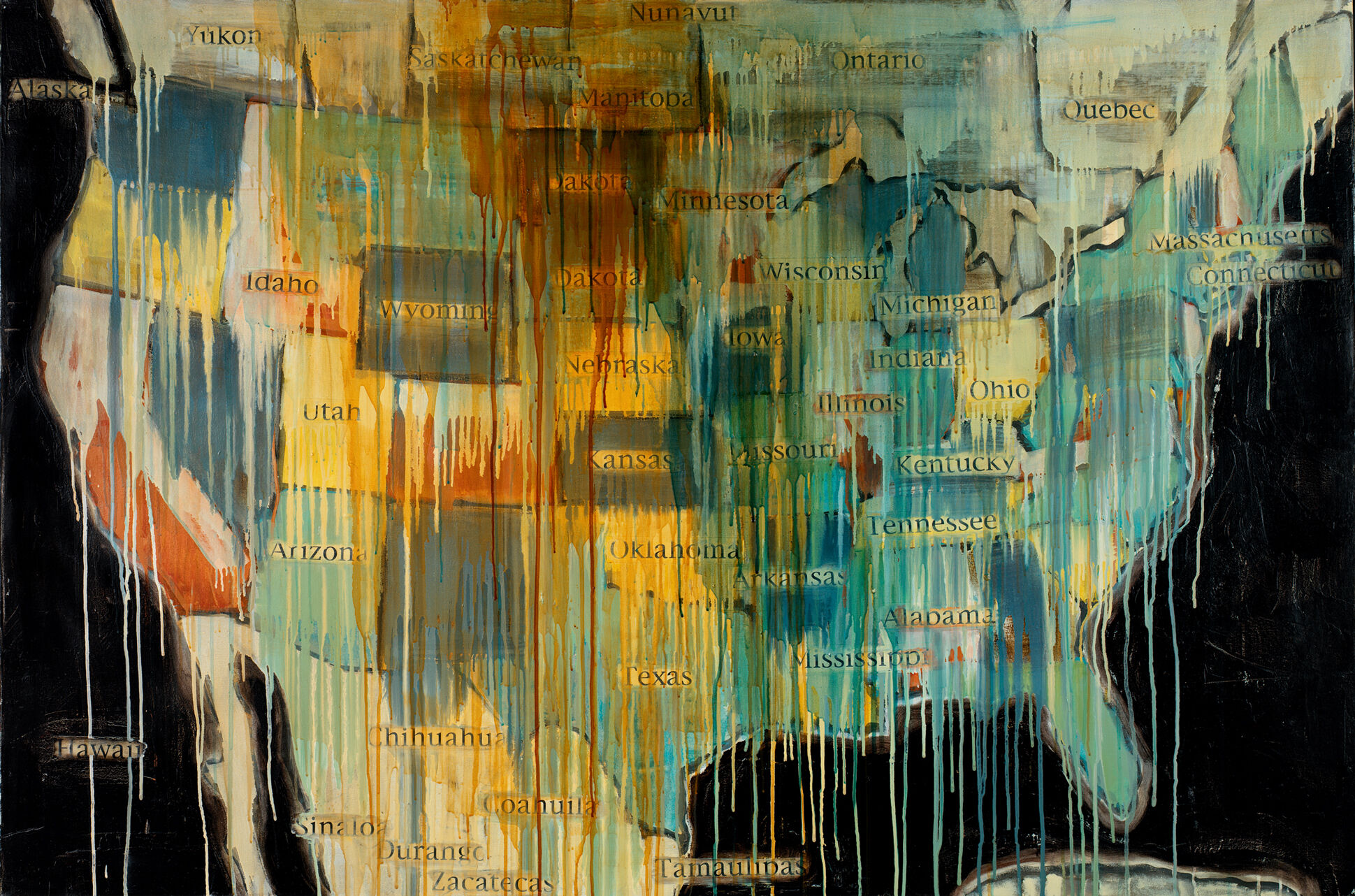
Virtual Tour: Jaune Quick-to-See-Smith: Memory Map
Thursday, August 10, 2023
12 pm -
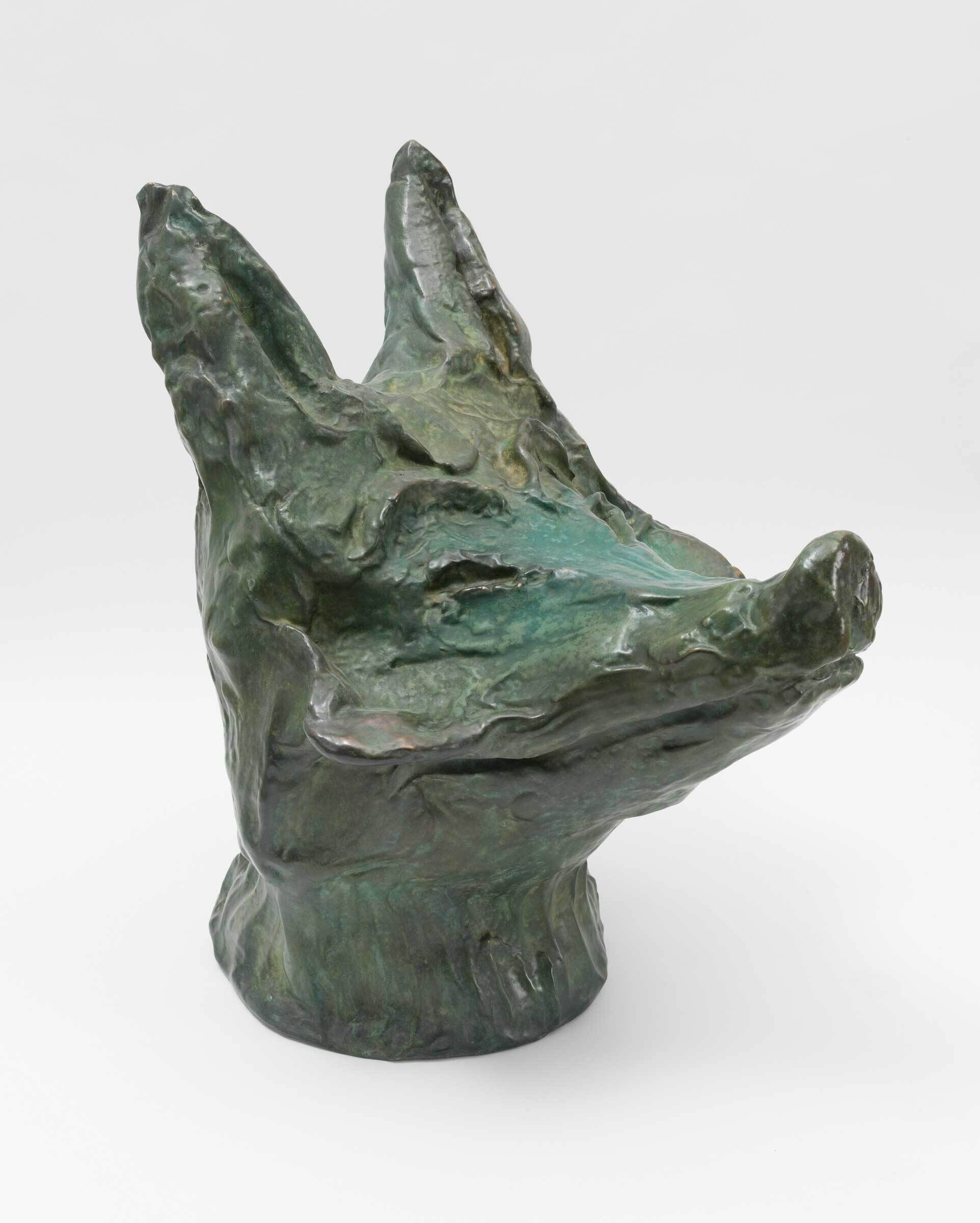
Open Studio: Explore Memory Map with Rachel Martin
Saturday, July 29, 2023
11 am–3 pm -
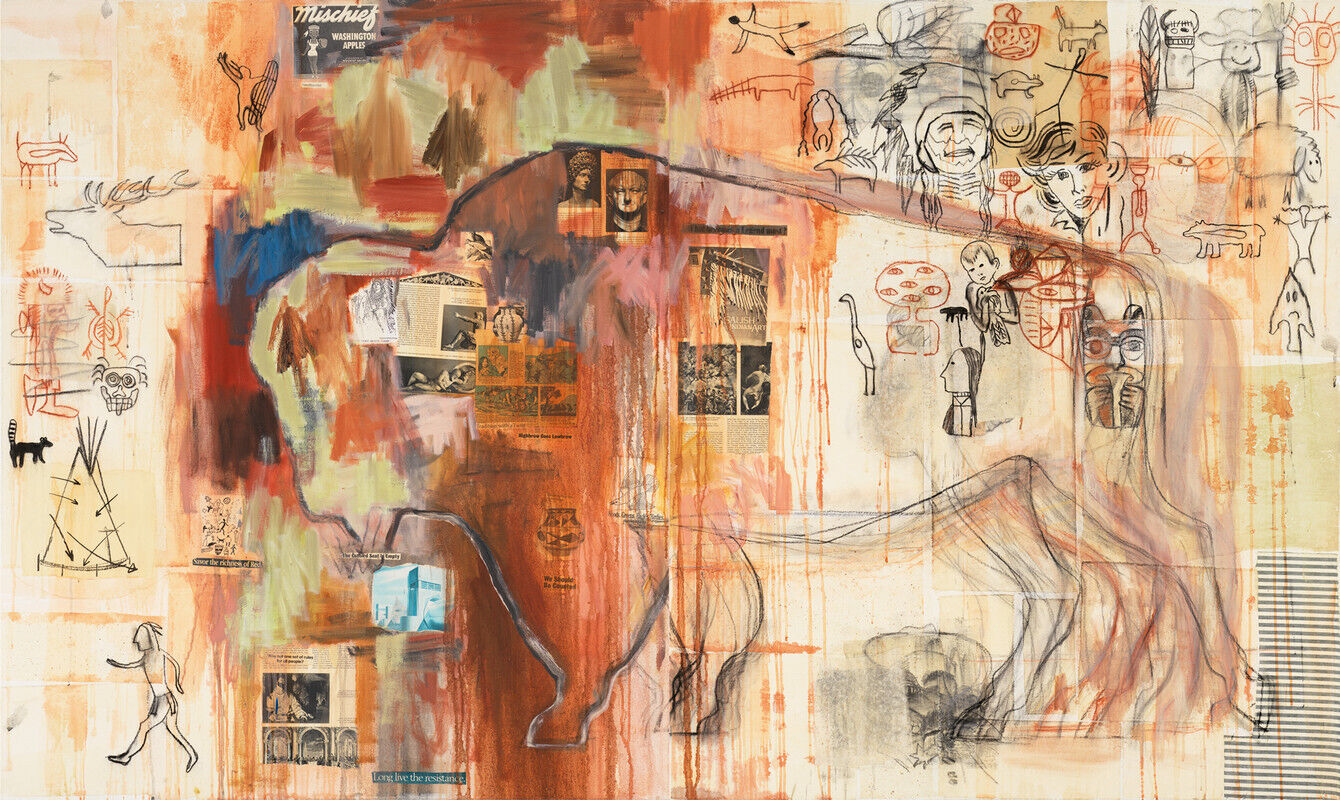
Contemporaries Curator-Led Tour: Jaune Quick-to-See Smith: Memory Map
Thursday, June 22, 2023
6:30 pm
Mobile guides
Learn more about selected works from artists and curators.
View guideExhibition Catalogue
Throughout her career as artist, activist, and educator, Jaune Quick-to-See Smith (b. 1940) has forged a personal yet accessible visual language she uses to address environmental destruction, war, genocide, and the misreading of the past. An enrolled Salish member of the Confederated Salish and Kootenai Nation, Smith cleverly deploys elements of abstraction, neo-expressionism, and pop, fusing them with Indigenous artistic traditions to upend commonly held conceptions of historical narratives and illuminate absurdities in the formation of dominant culture. Her drawings, prints, paintings, and sculptures blur categories and question why certain visual languages attain recognition, historical privilege, and value, reflecting her belief that her “life’s work involves examining contemporary life in America and interpreting it through Native ideology.” Also central to Smith’s work and thinking is the land and she emphasizes that Native people have always been part of the land: “These are my stories, every picture, every drawing is telling a story. I create memory maps.” The publication illustrates nearly five decades of Smith’s work in all media, accompanied by essays and short texts by contemporary Indigenous artists and scholars on each of Smith’s major bodies of work.
Buy now
Explore works from this exhibition
in the Whitney's collection
View 17 works
In the News
“Her work has helped to prove that modernism and indigeneity can coexist across a range of mediums and materials, including the hybrid of collage and abstract painting that has become a signature style.” —New York Magazine
“After working tirelessly to ‘break the buckskin ceiling,’ the artist and activist comes to the Whitney with a retrospective that redefines what ‘American’ means.” —The New York Times
“Bringing the experience of Indigenous communities to the fore and drawing on a wide range of art-historical references, Smith’s work challenges commonly held conceptions of history and explores contemporary American life.” —Apollo Magazine
“…a feeling that the paintings and installations are at home in these galleries, lovingly hung by true believers in her art and, at once, something entirely new.” —The Village Sun
“Smith is a visionary artist who should be far better known by the public and accepted into the discourse of contemporary American art. This exhibition should help push in that long-overdue direction.” —Art & Antiques Magazine
“Smith refuses the aloofness of the white avant-garde in favor of something fierce and necessary—and, tragic to say, endlessly relevant for our time.” —4Columns
“…Smith is both a force for reckoning and a force to be reckoned with.” —The New Yorker
“Step into the captivating world of Jaune Quick-to-See Smith's exhibition at the Whitney Museum, and prepare to be moved by the profound depth and resonance of her work.” —Art & Object
“[Smith] more than just takes up space there, she owns it.” —Forbes
“More specific than the work of exposing the constructed nature of our national history, then, Smith’s art realigns art history, an intervention that is especially significant because it is staged within the Whitney’s halls.” —Studio International
“This prolific and impactful artist Jaune Quick-to-See Smith, with her very apt name, is an artist to seek out.” —Buddhistdoor Global
“Artist Jaune Quick-to-See Smith certainly has her own way of seeing—and painting—America.” —CBS Sunday Morning

